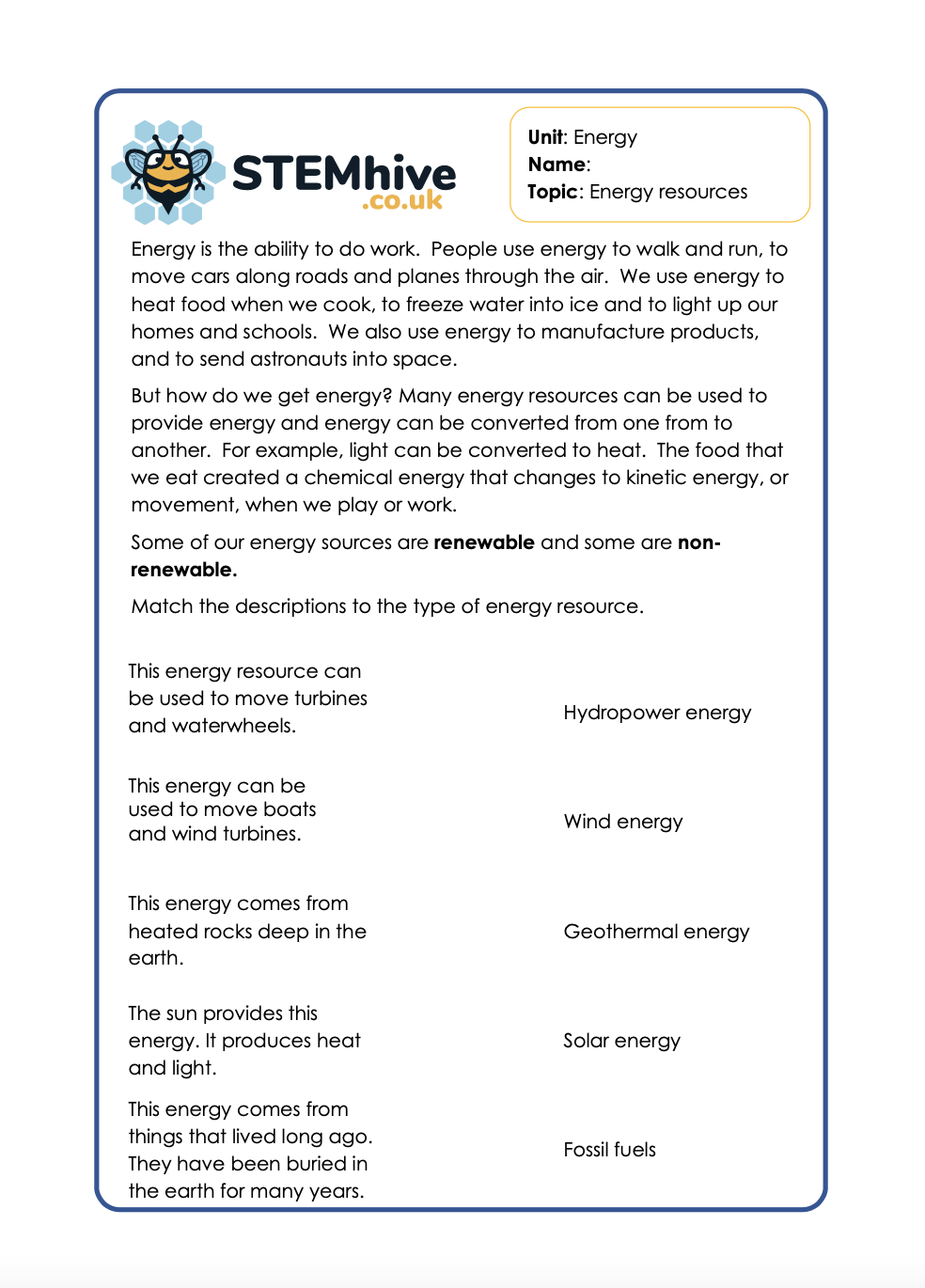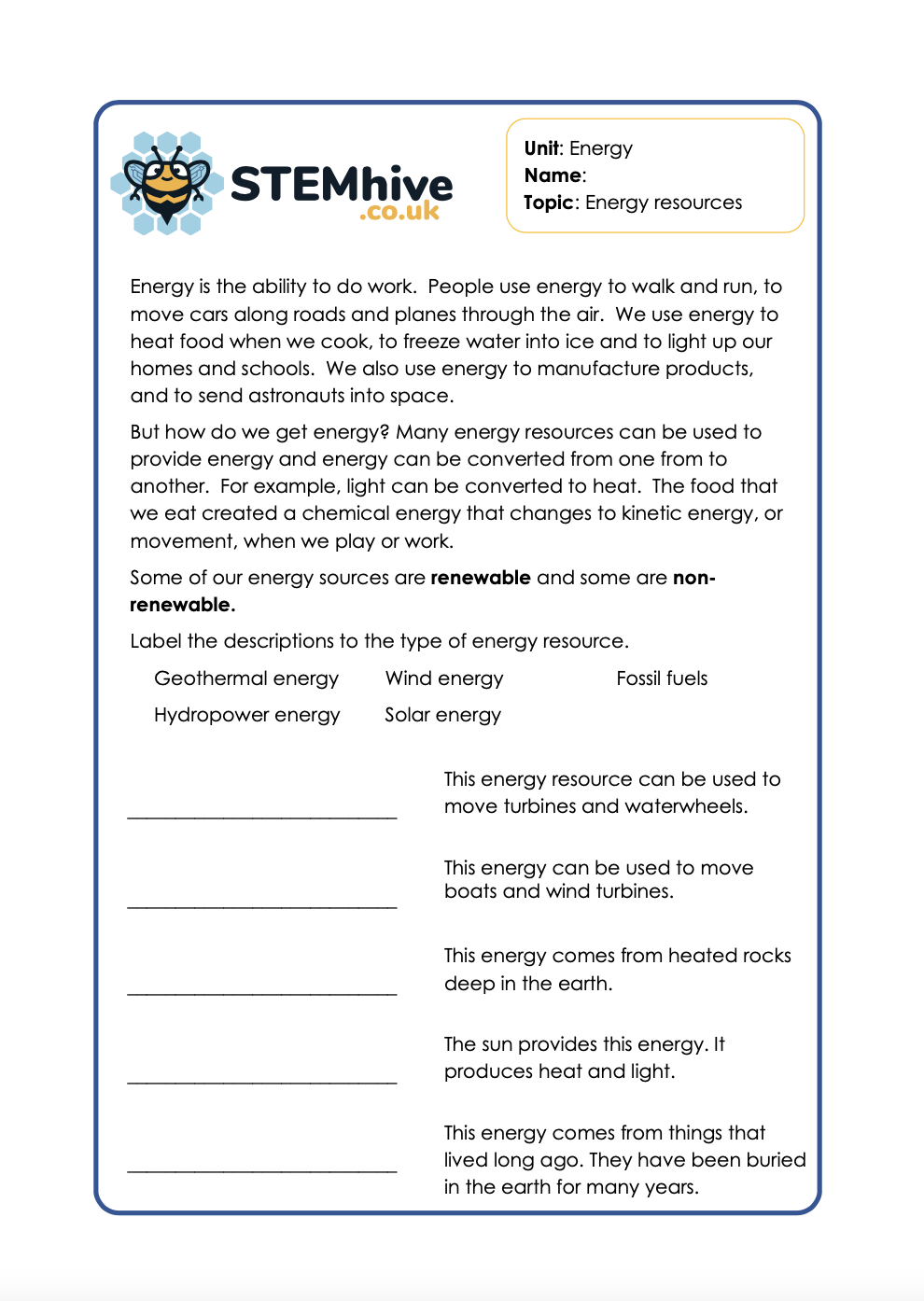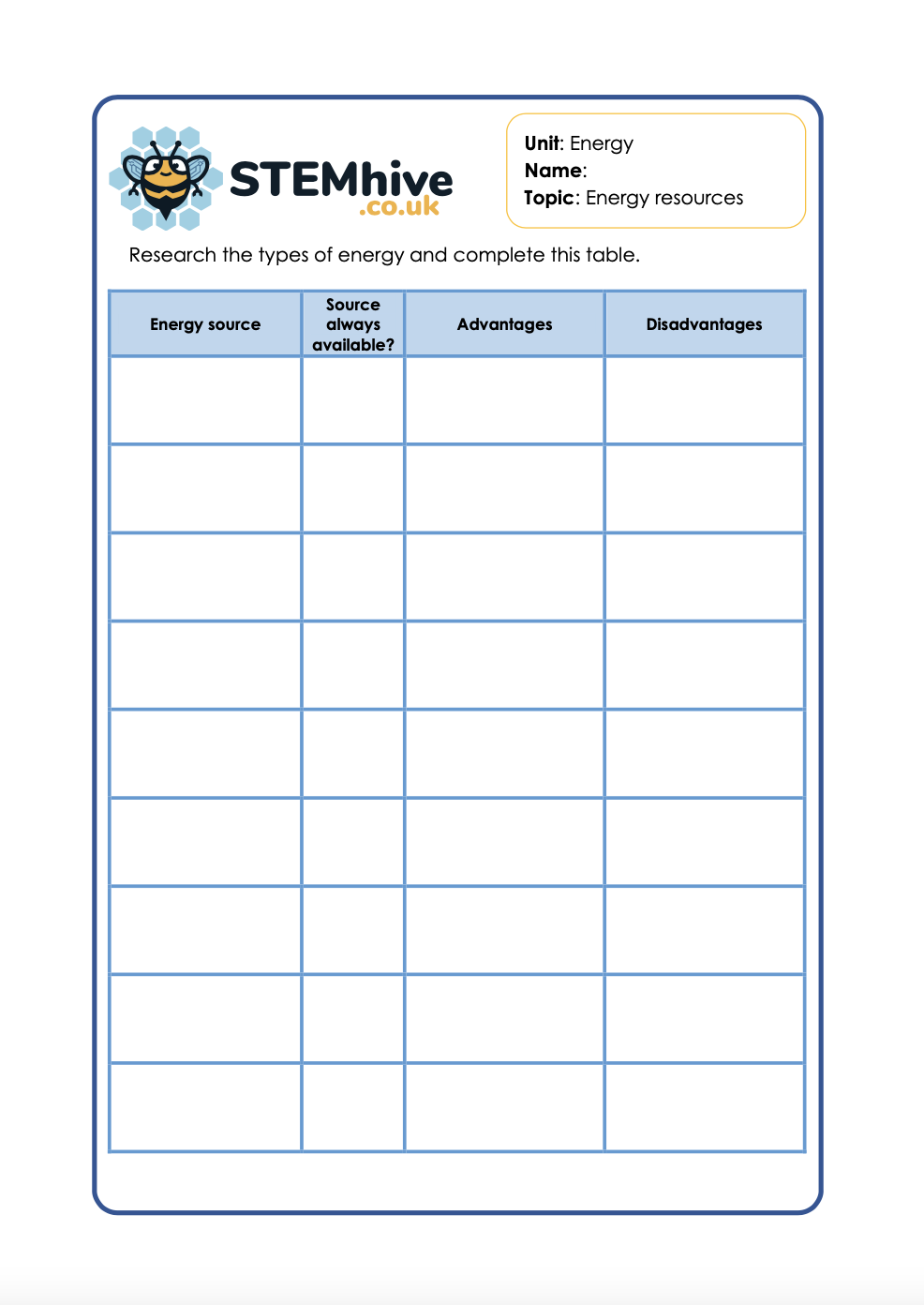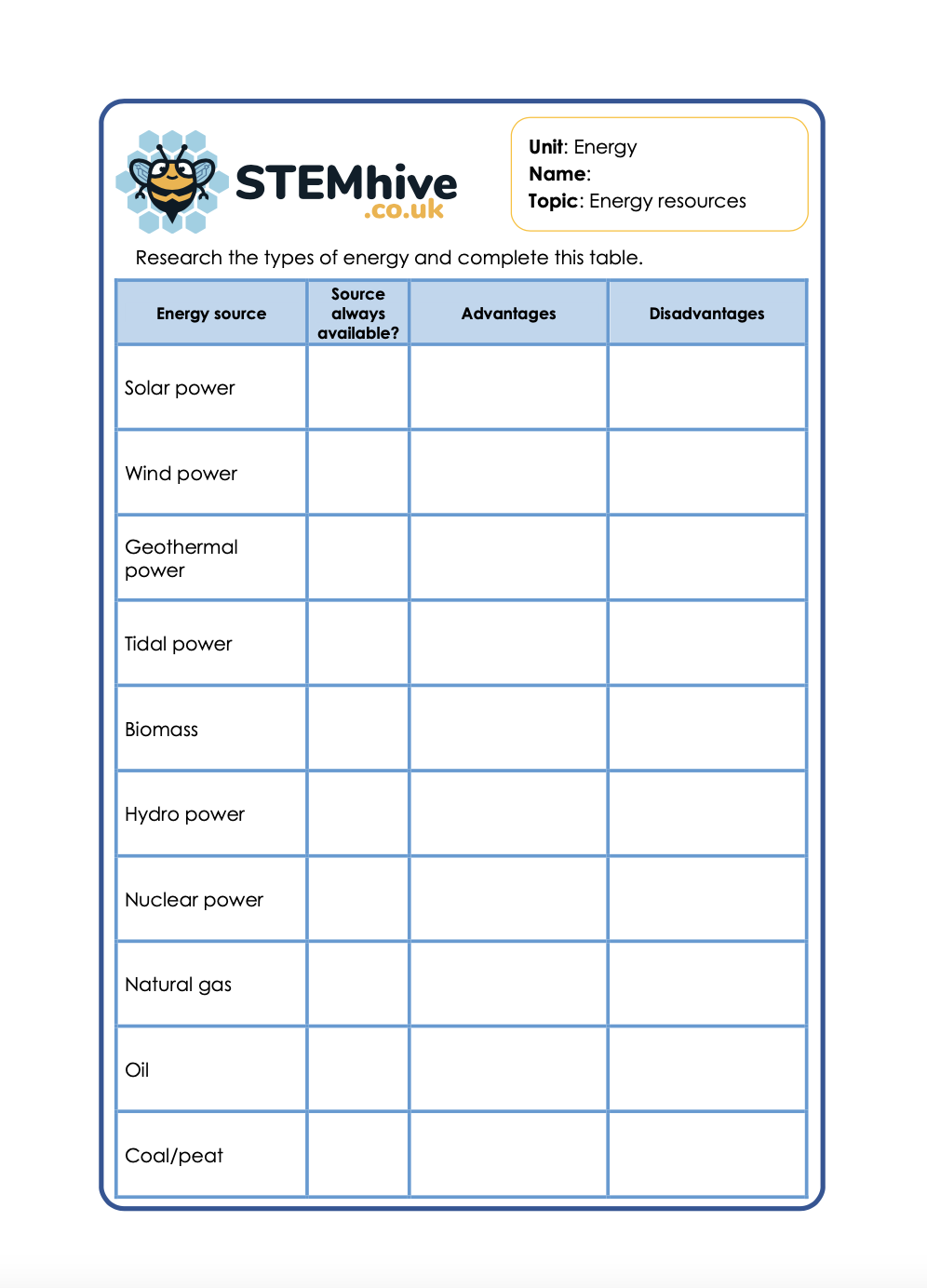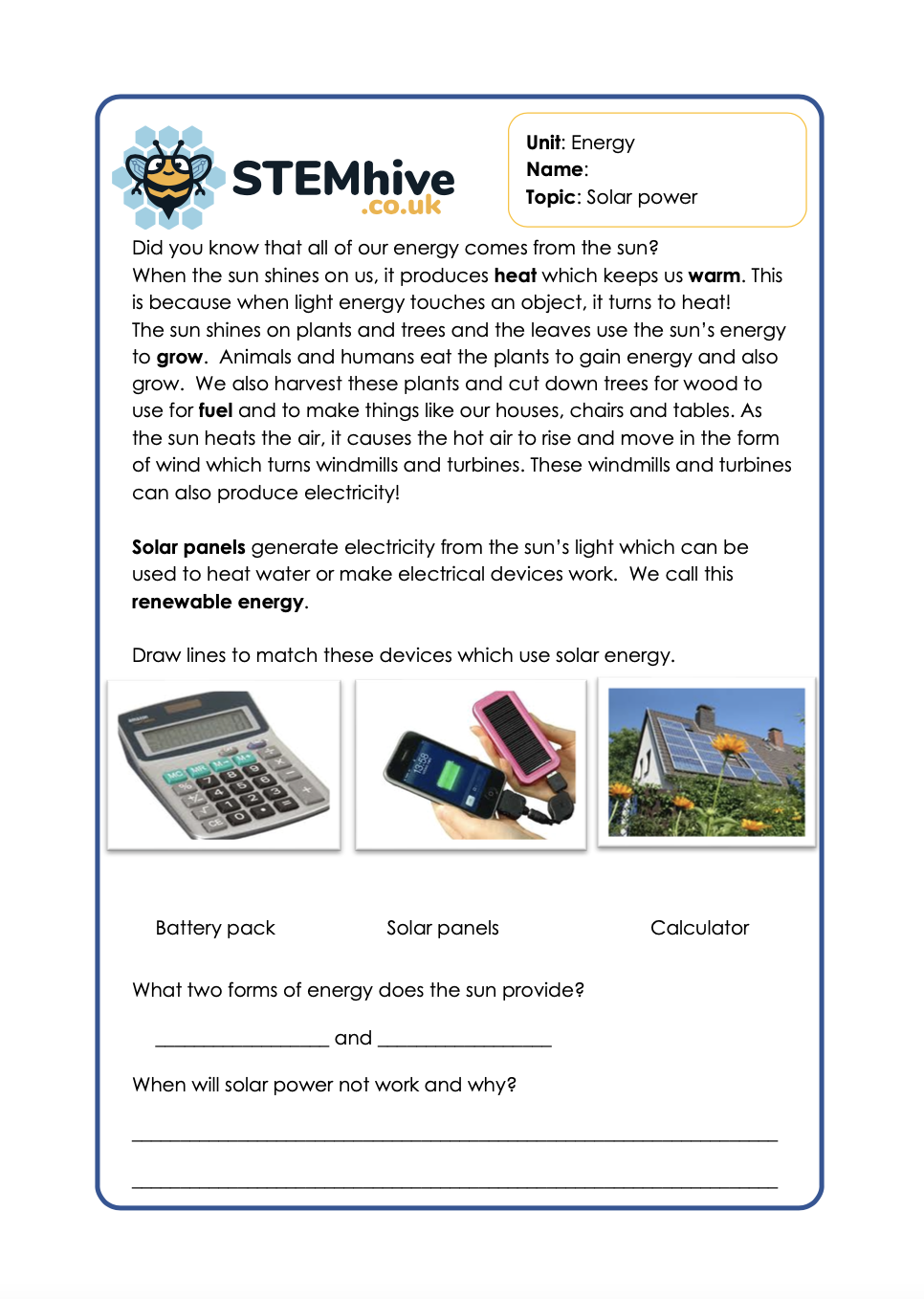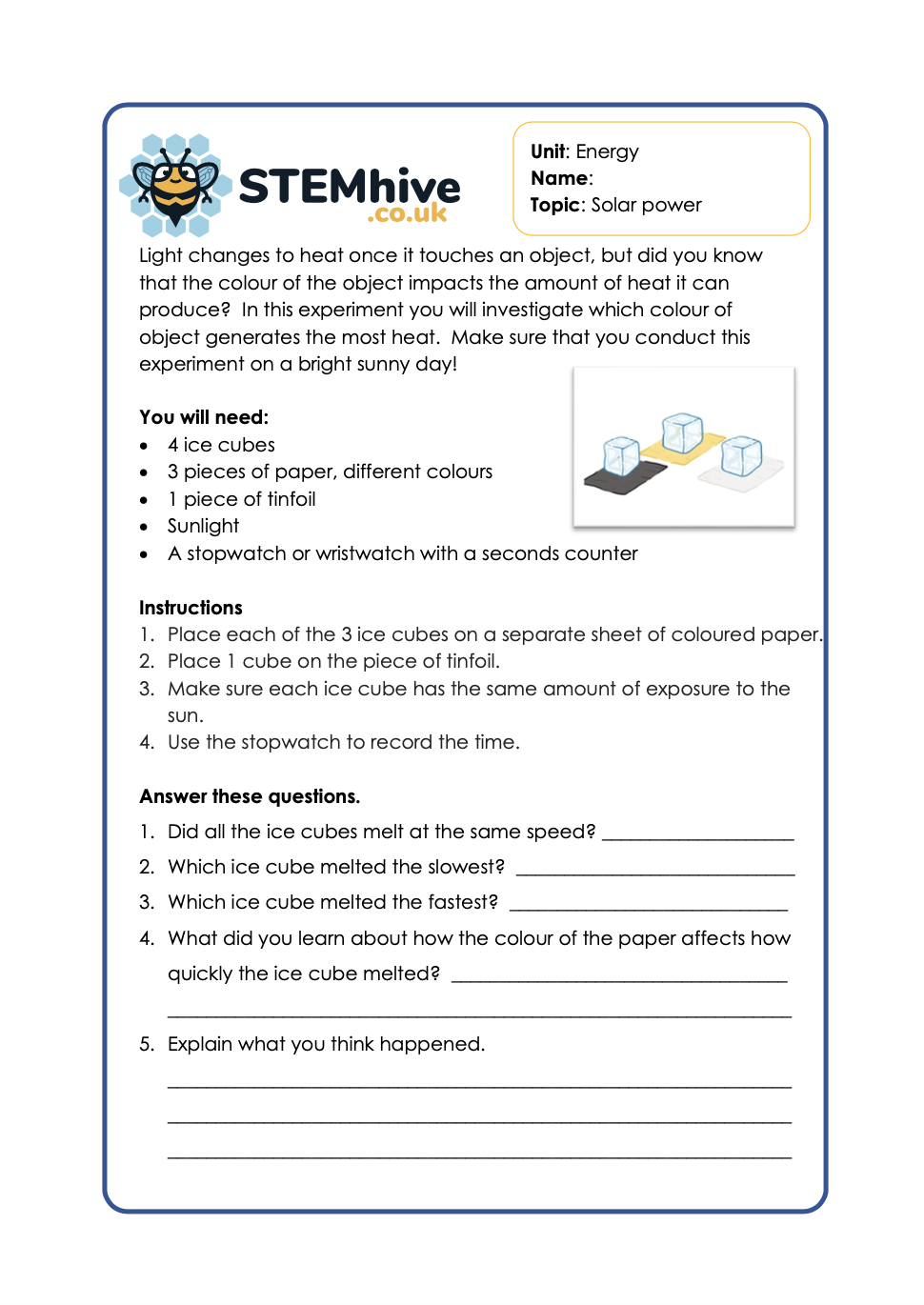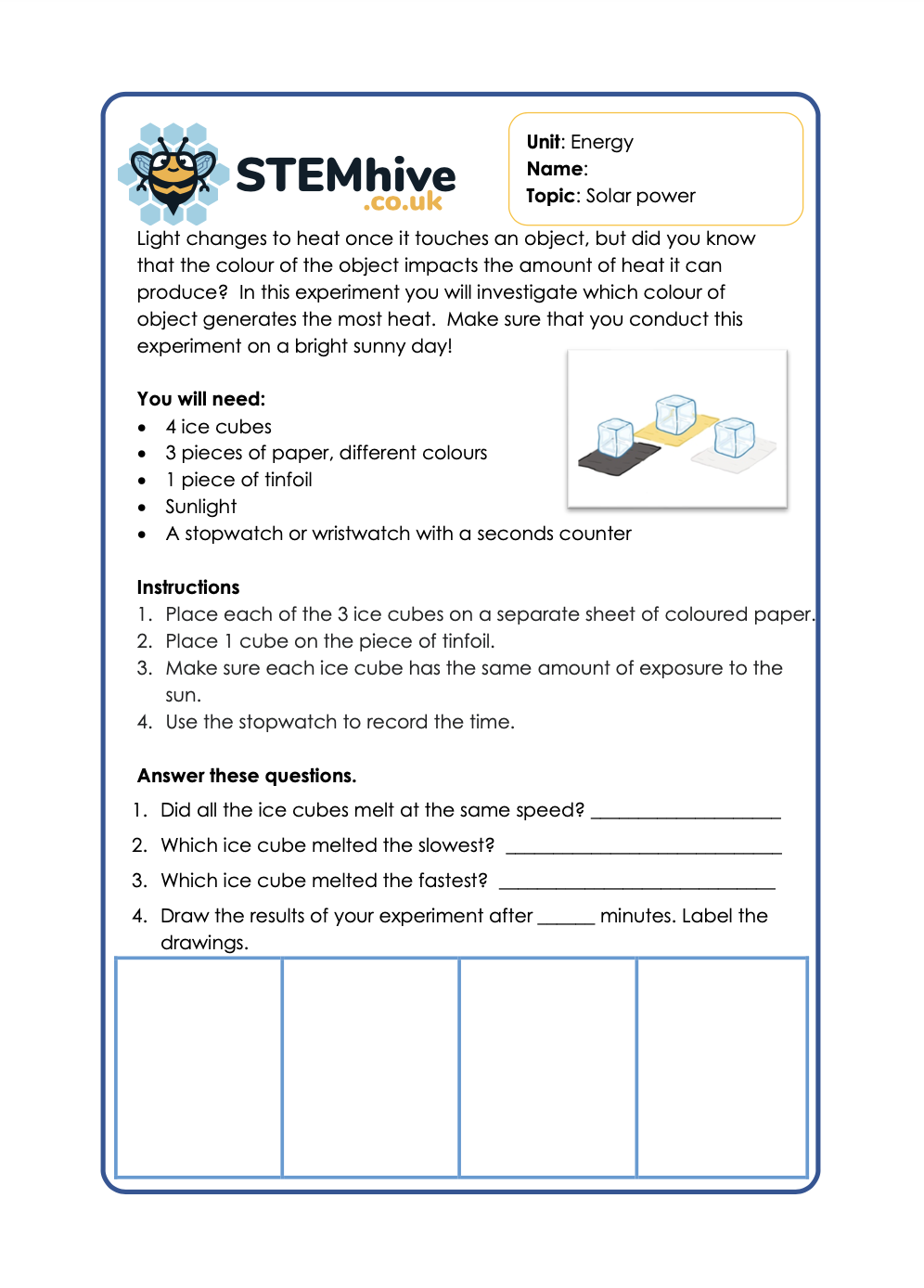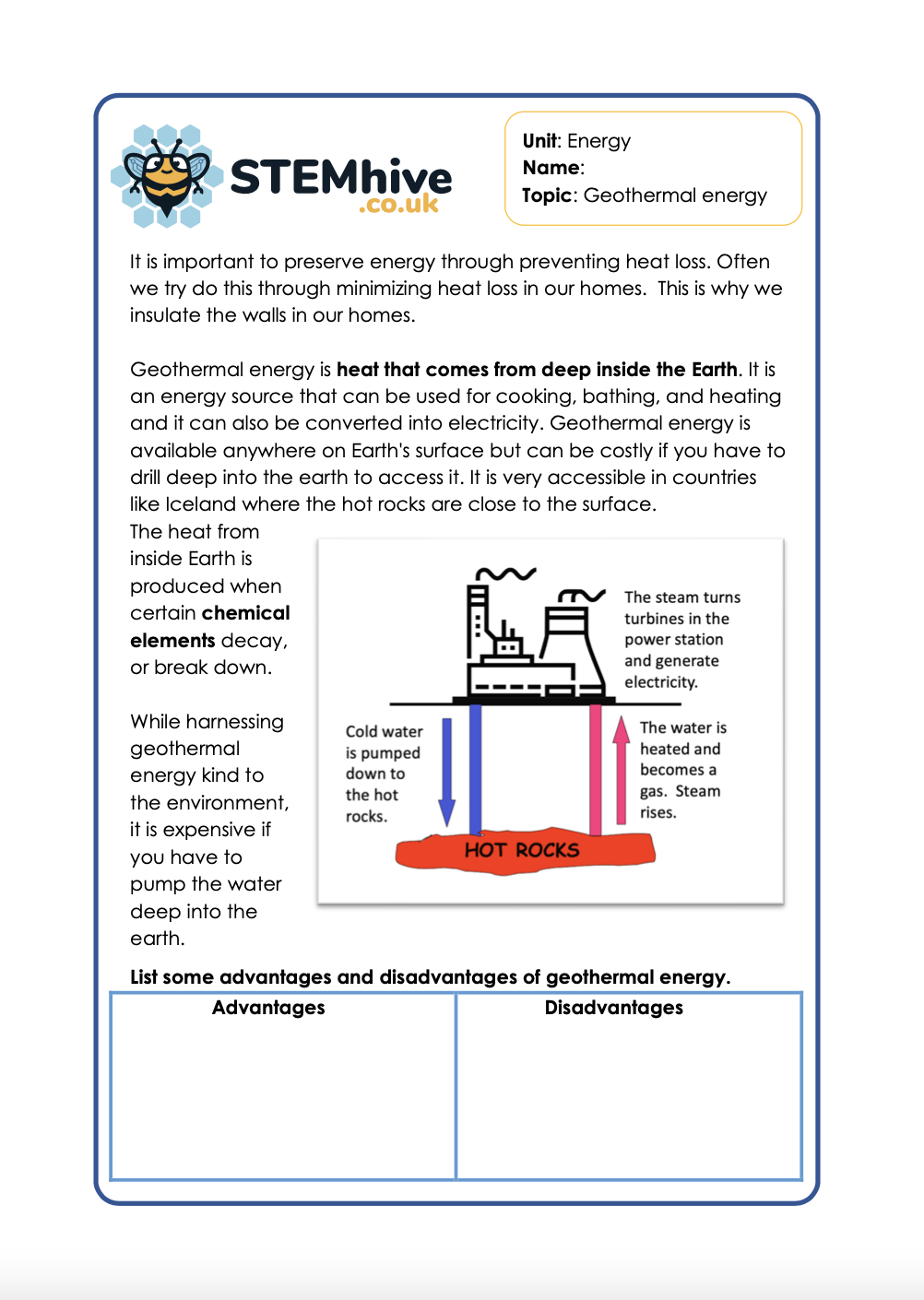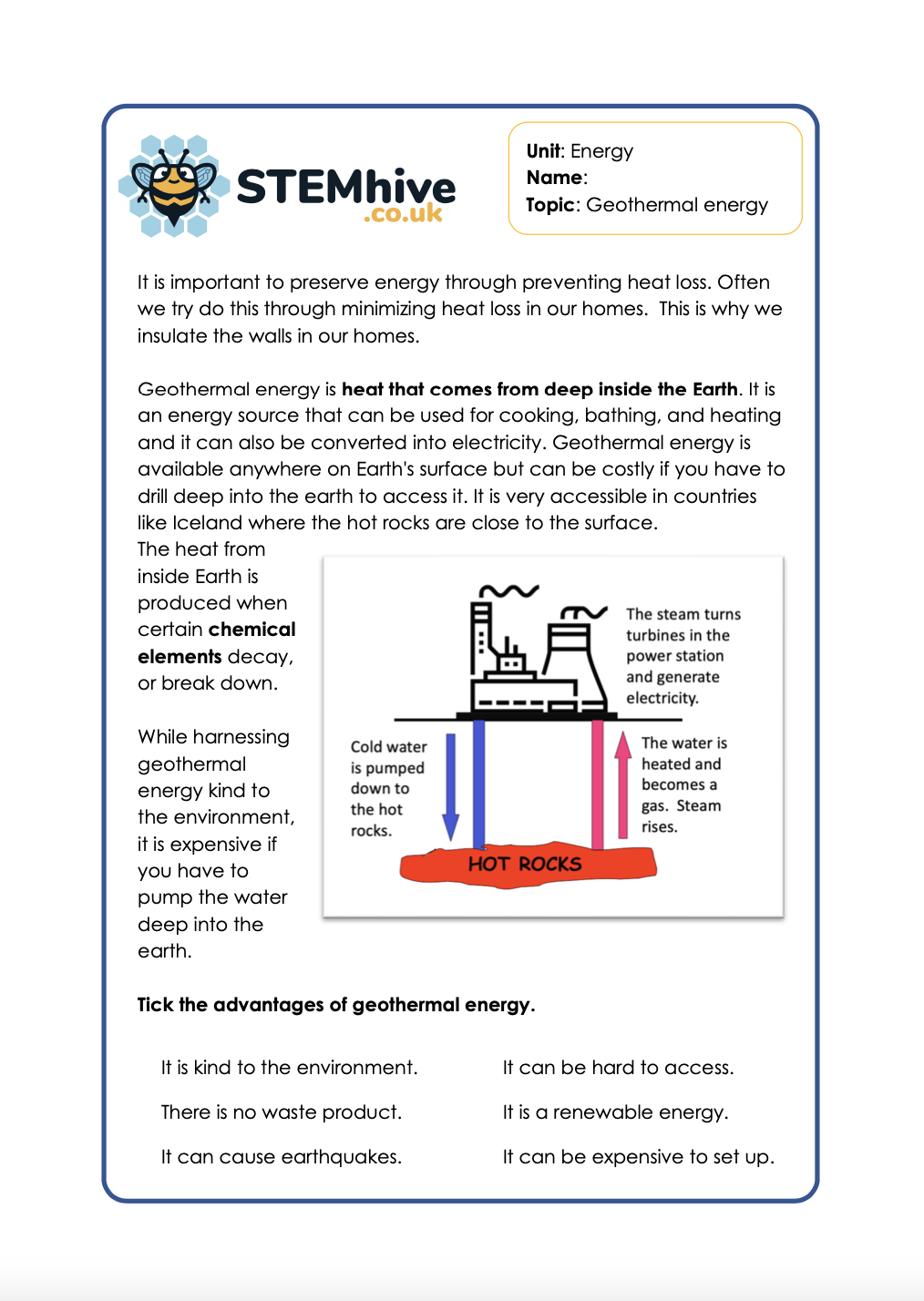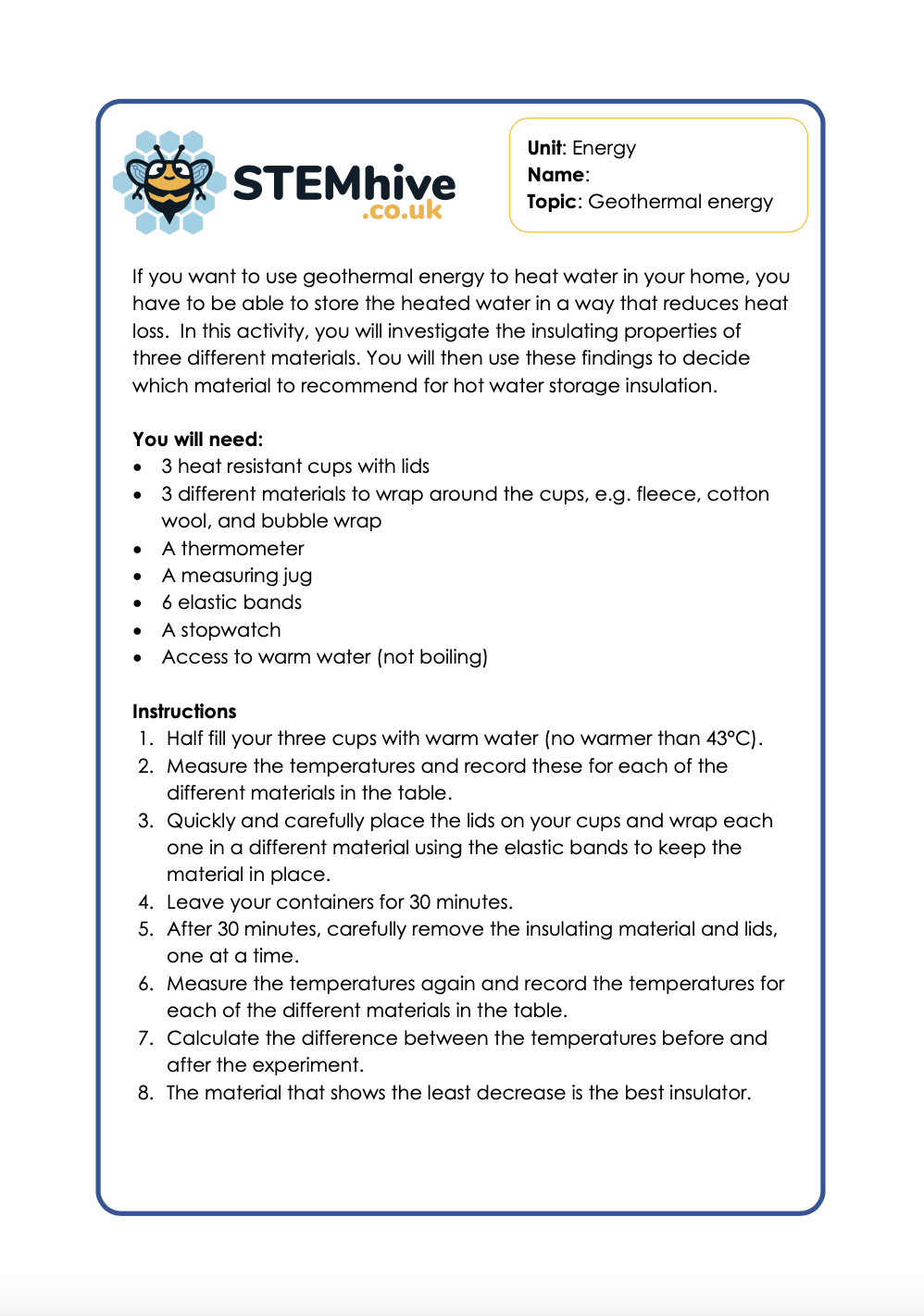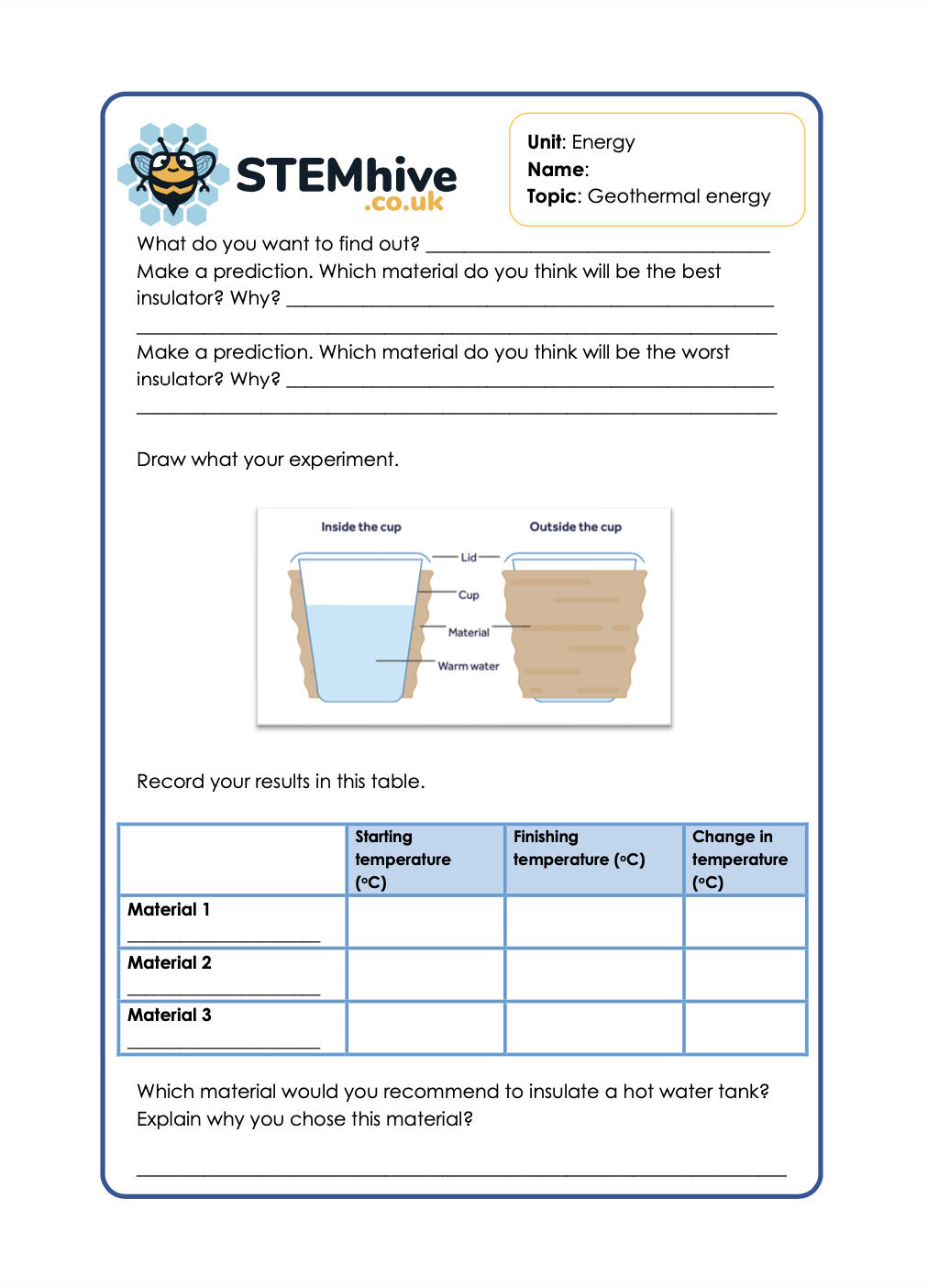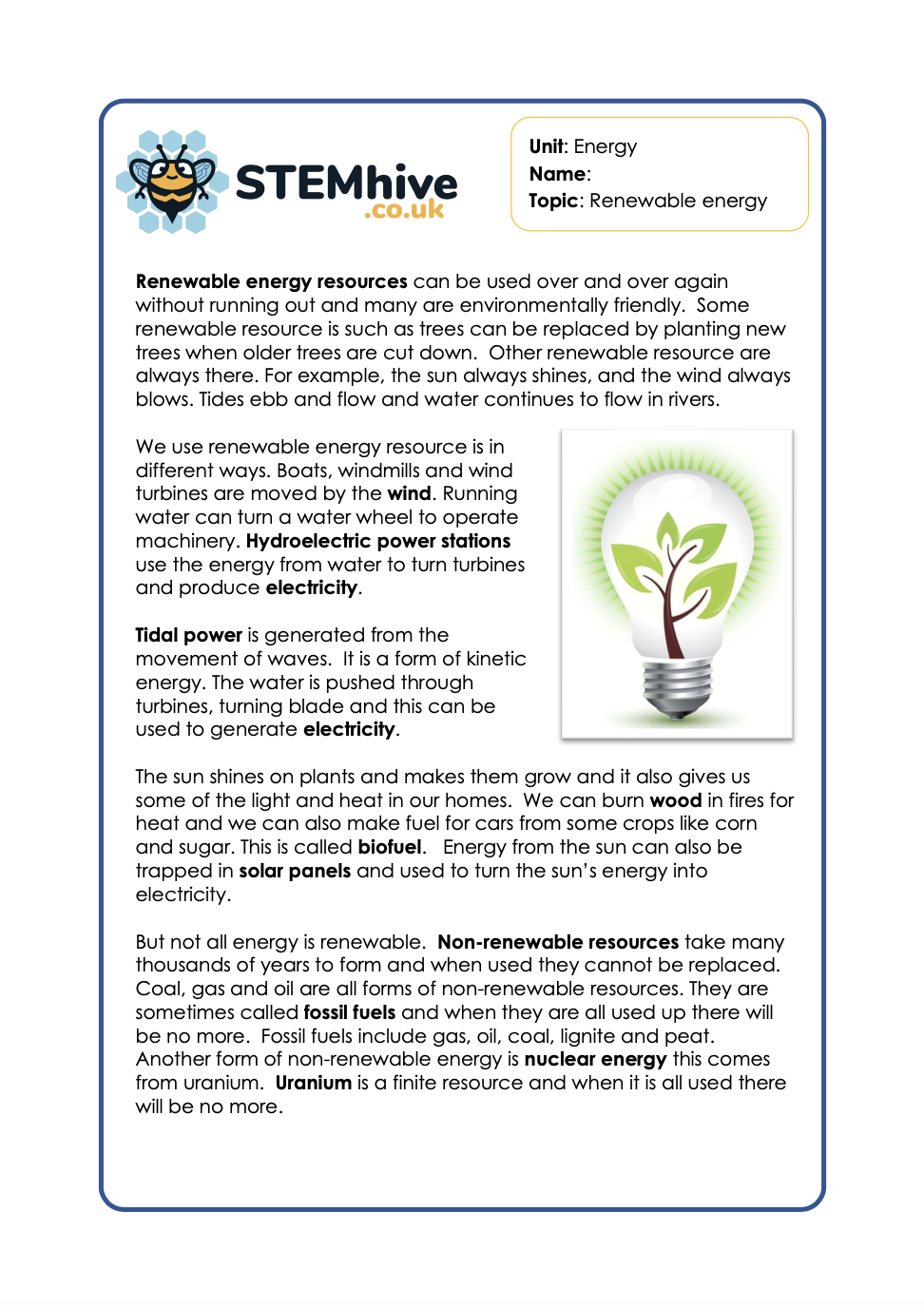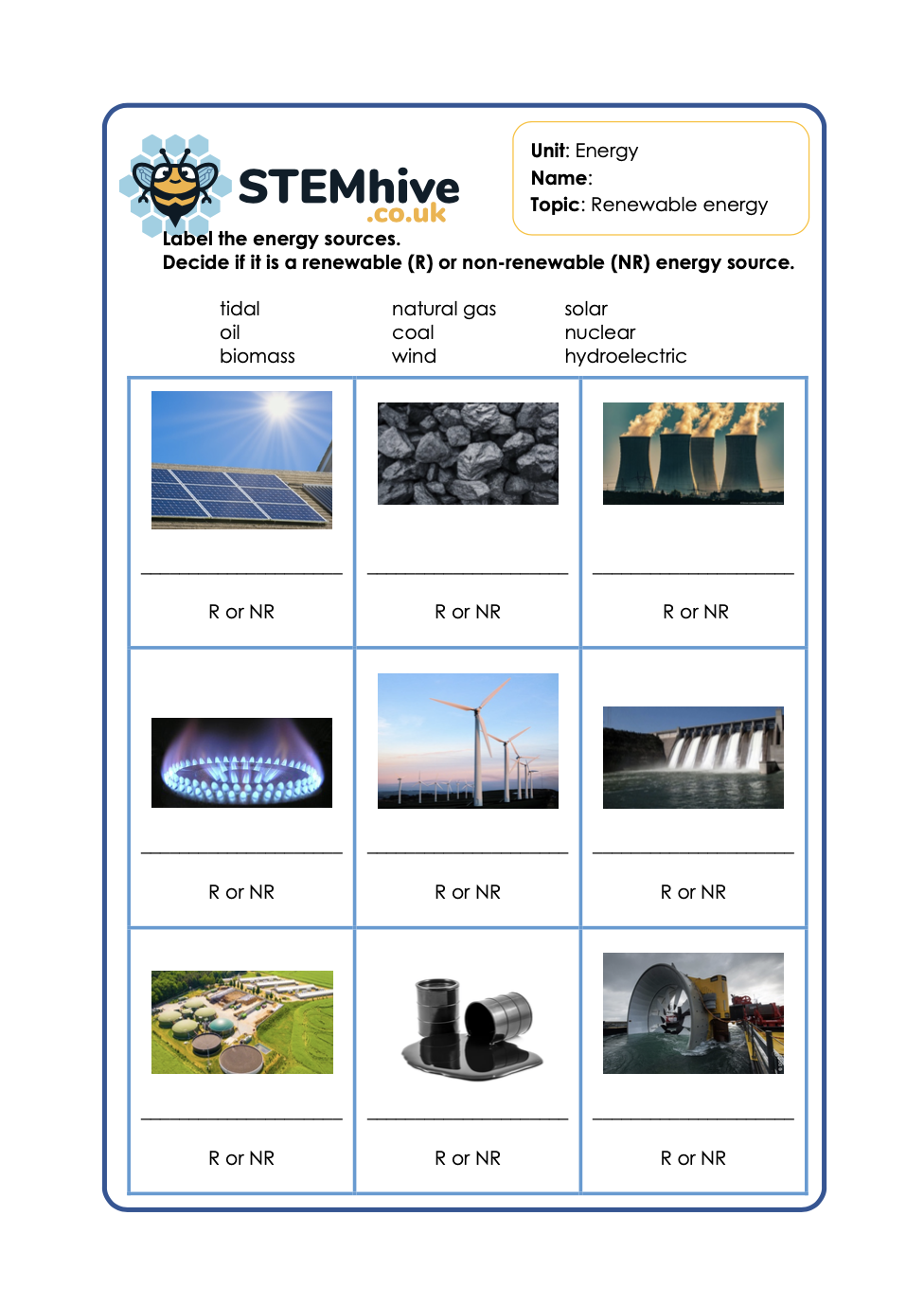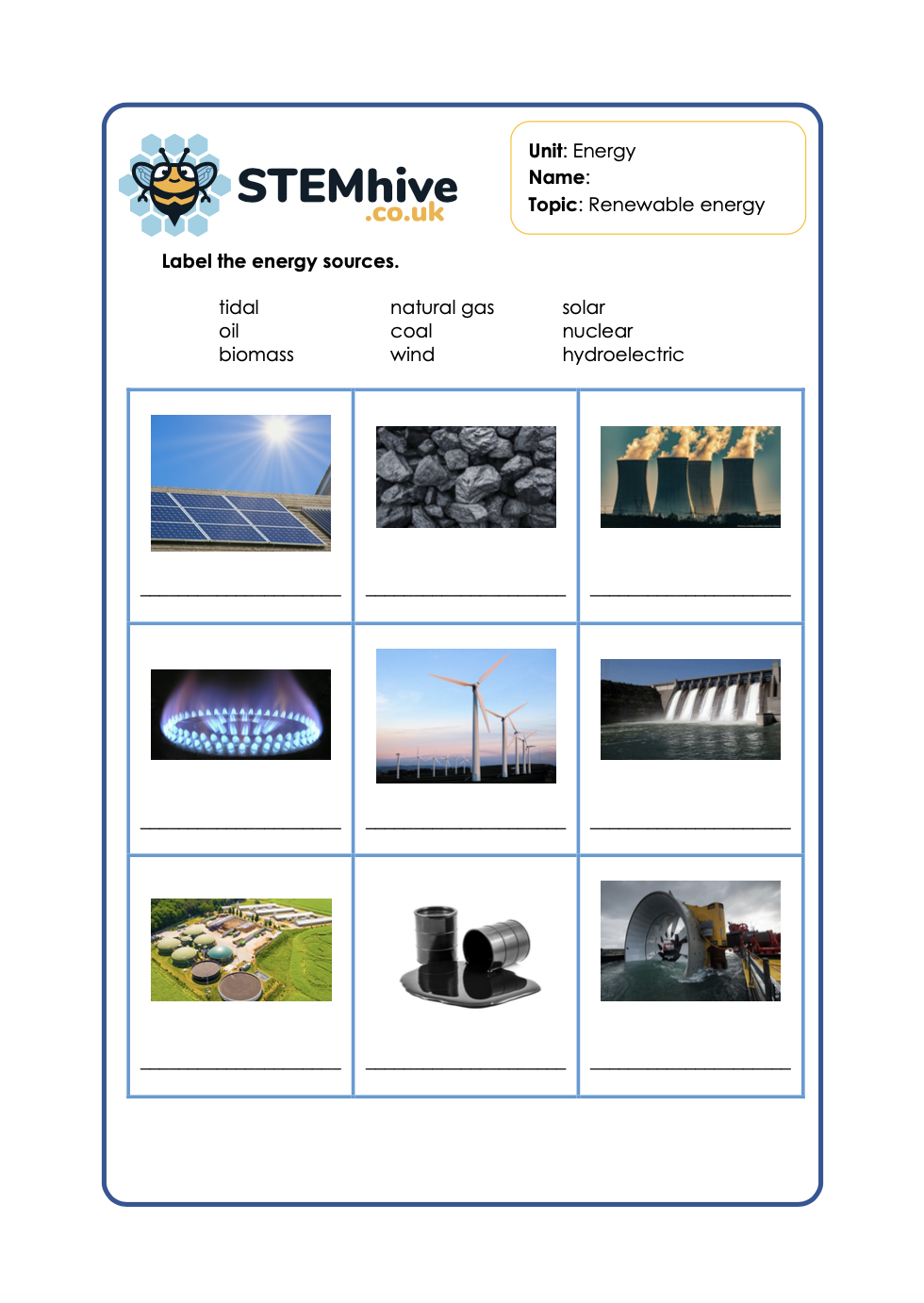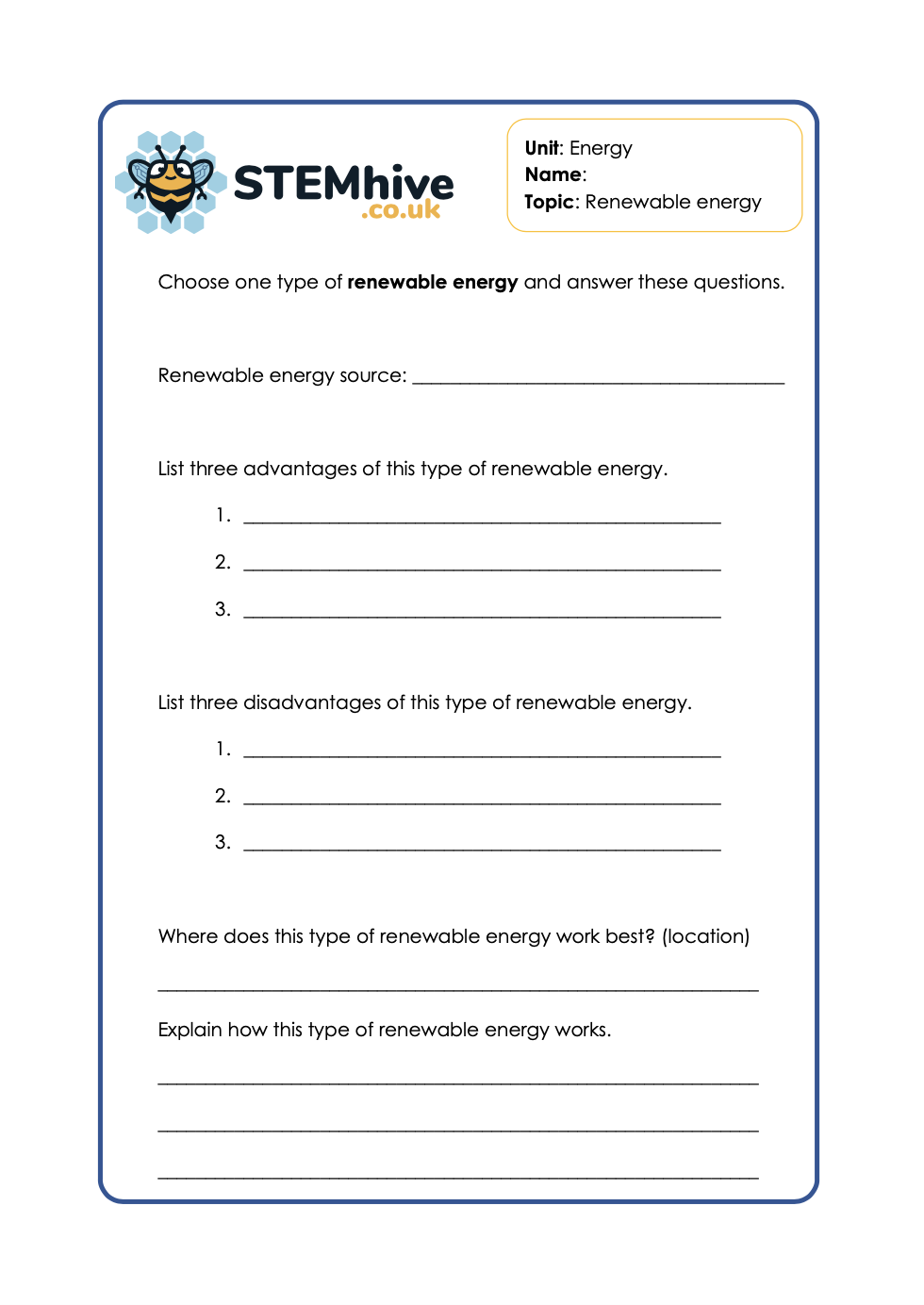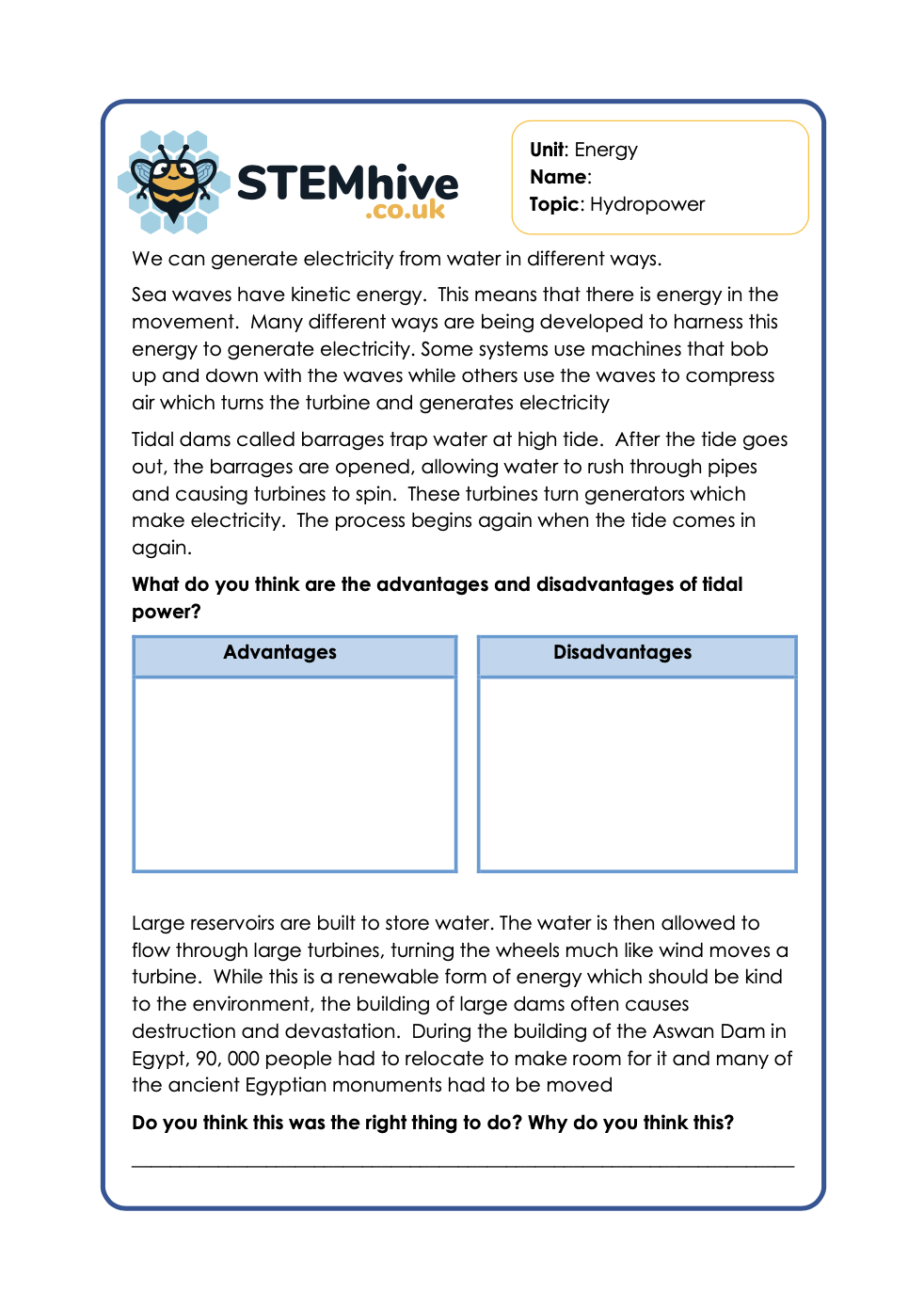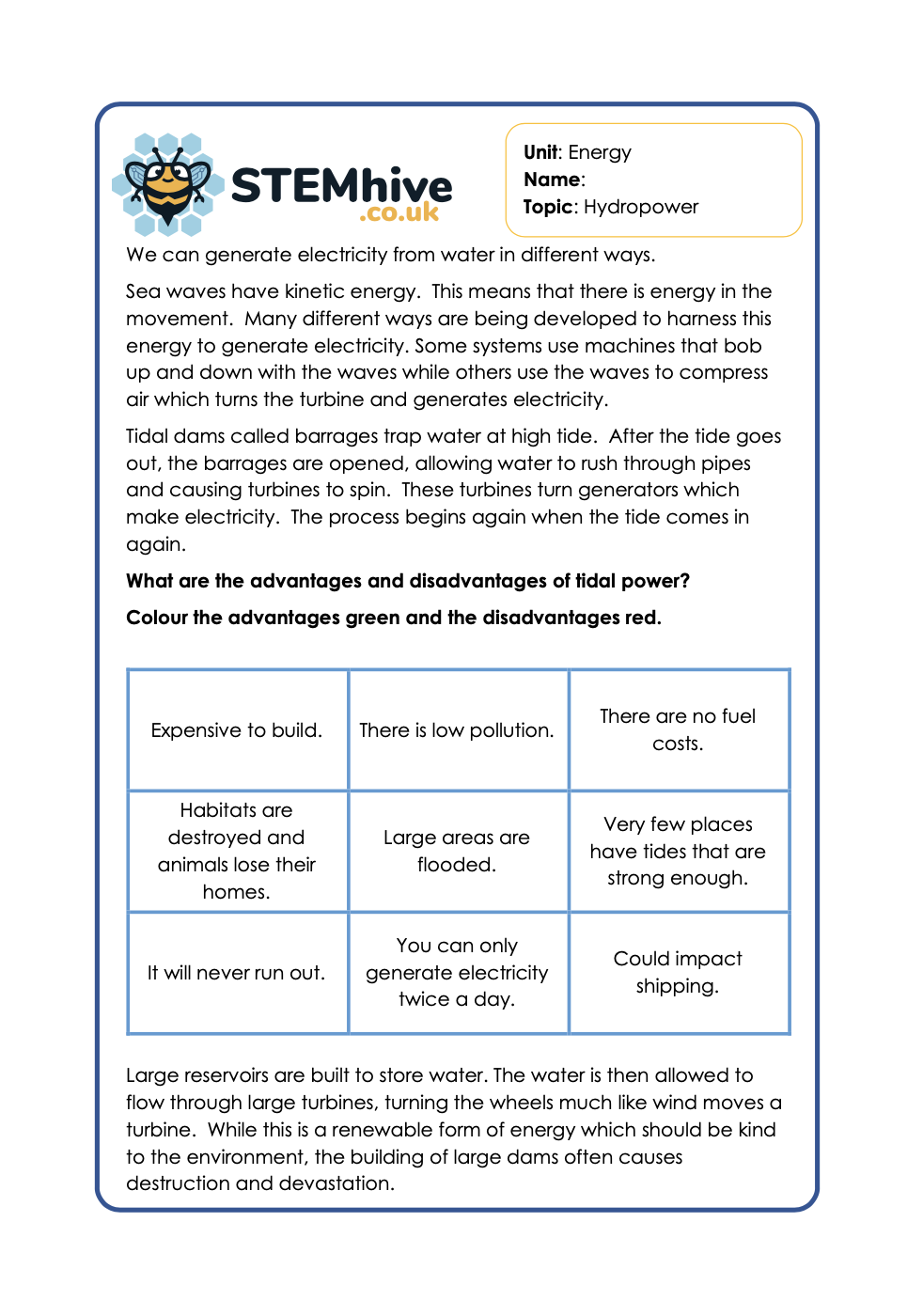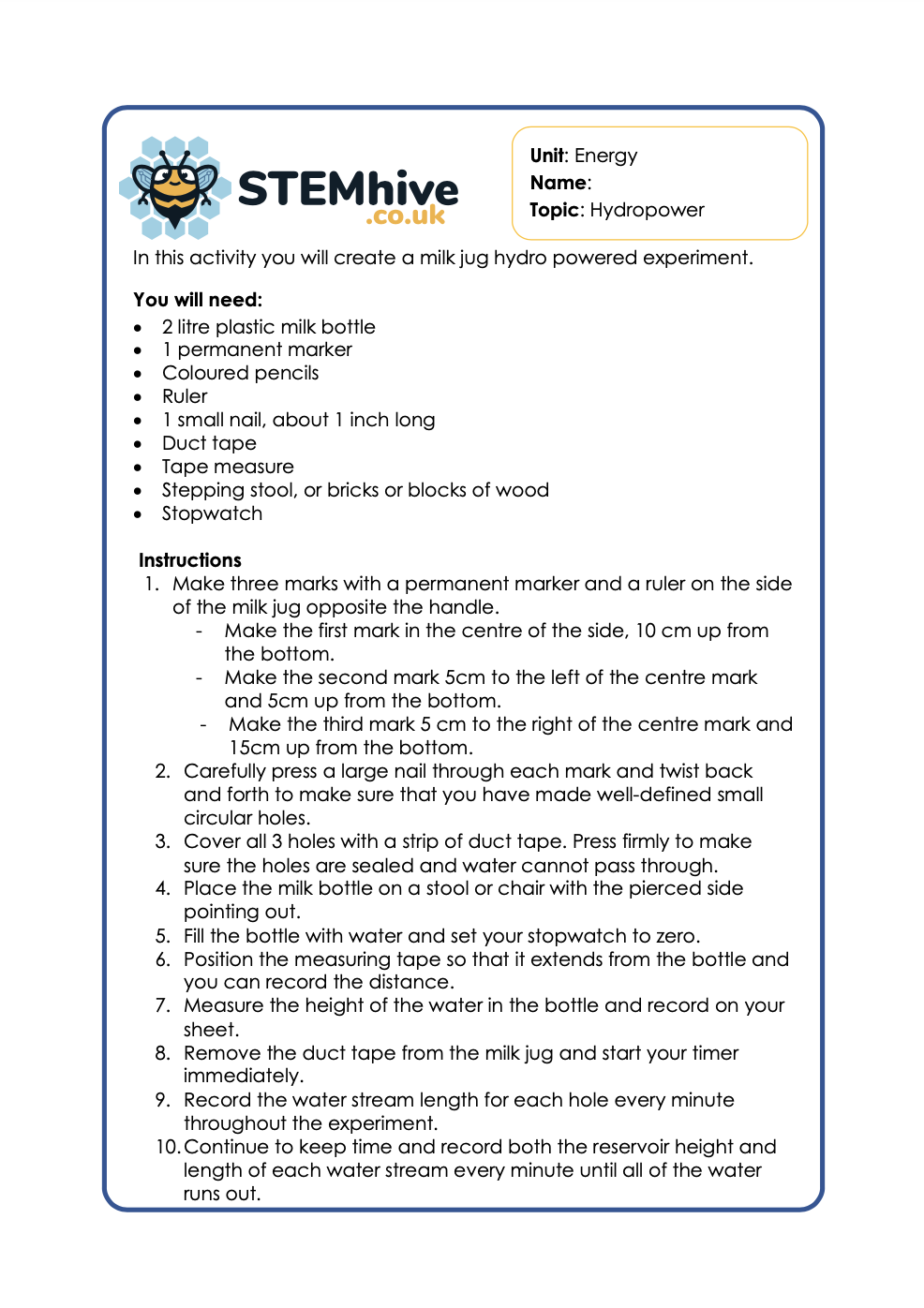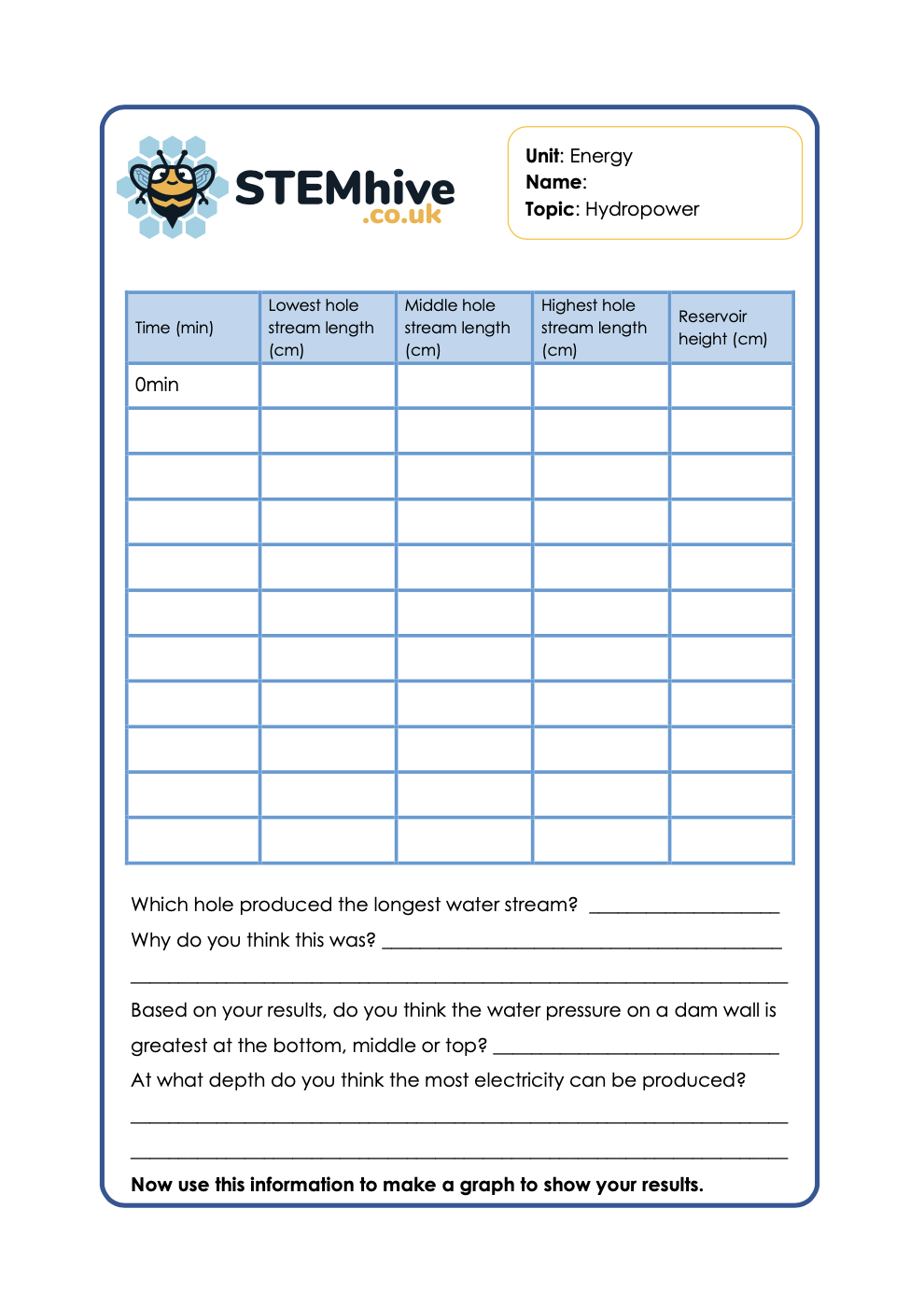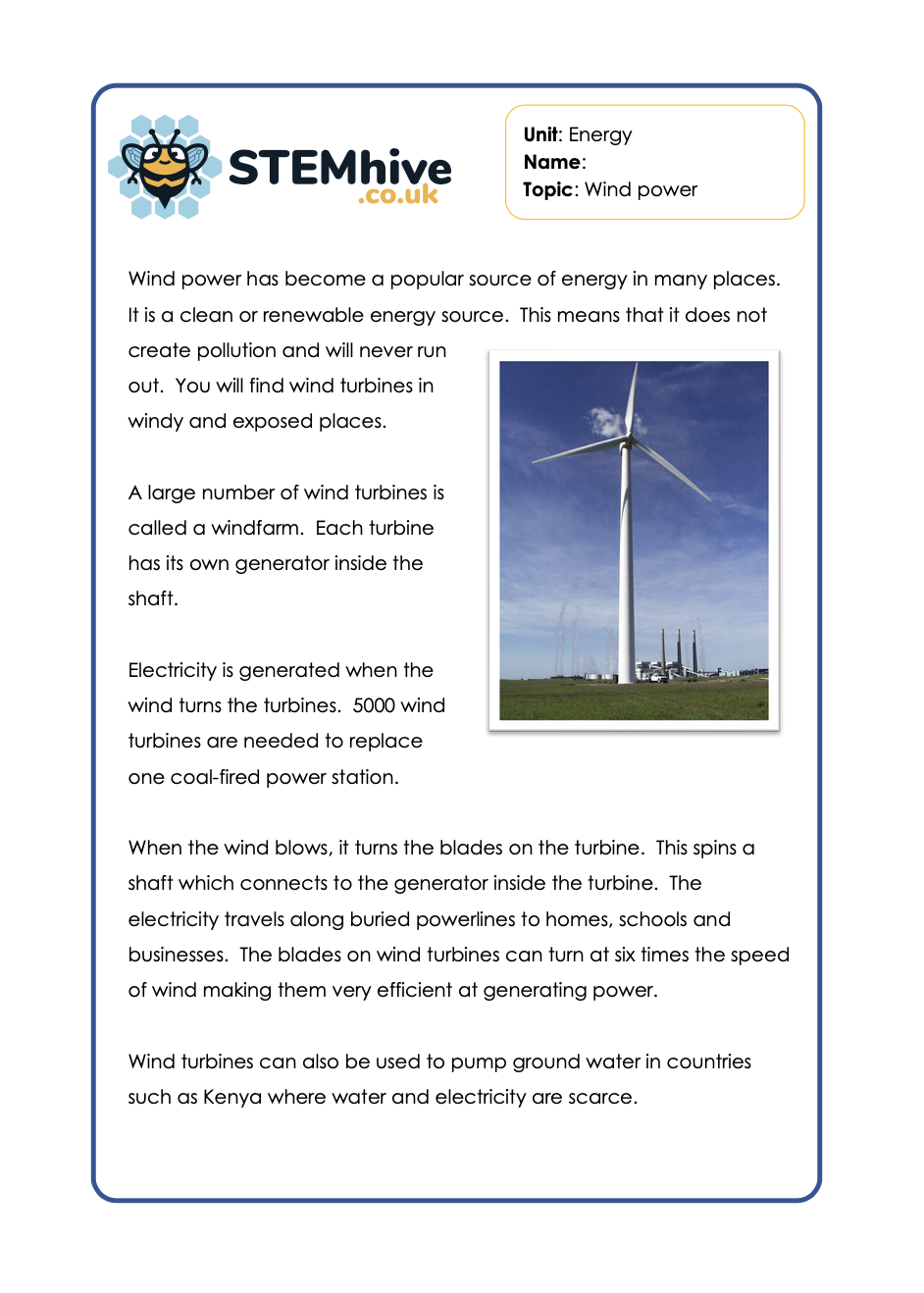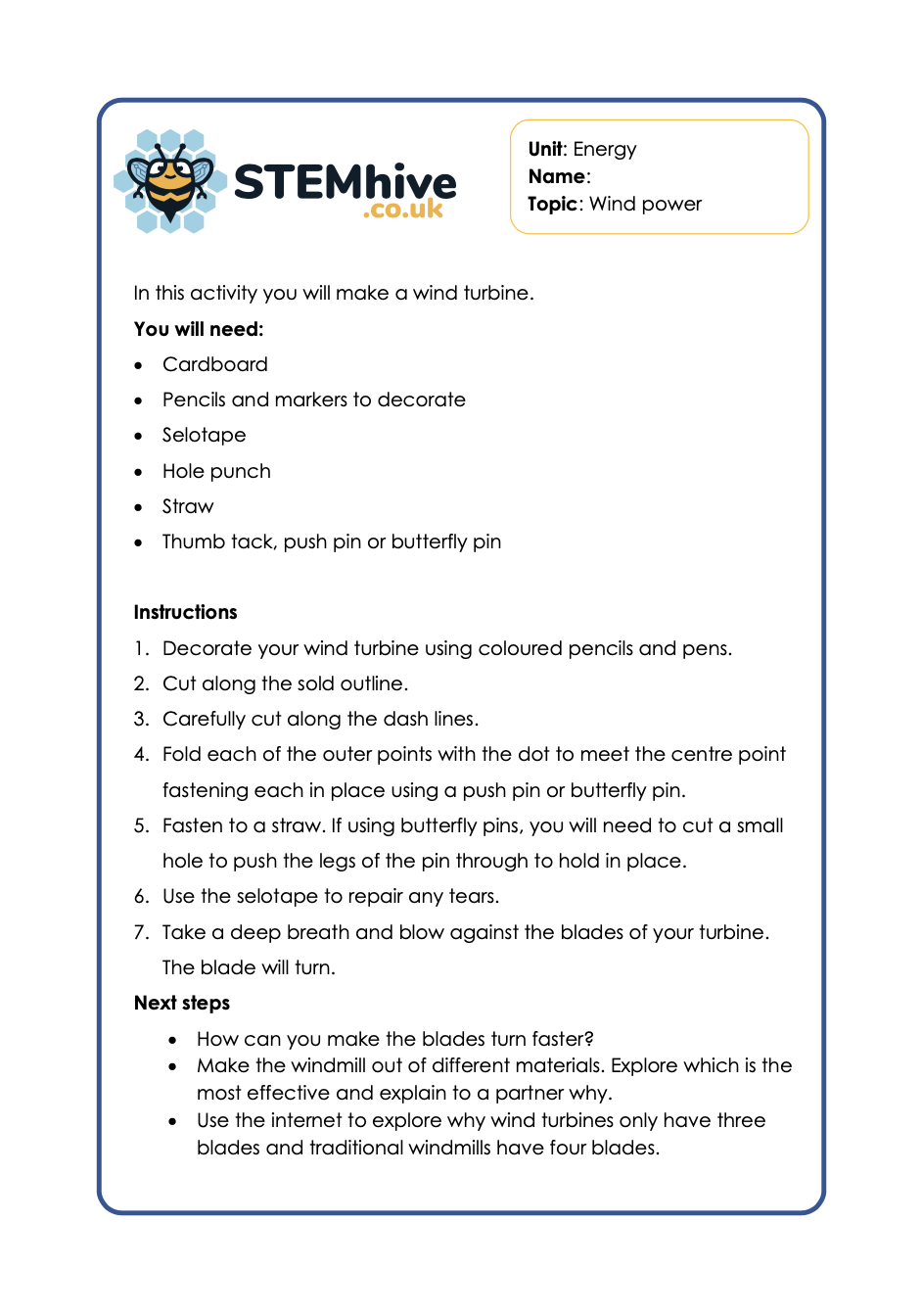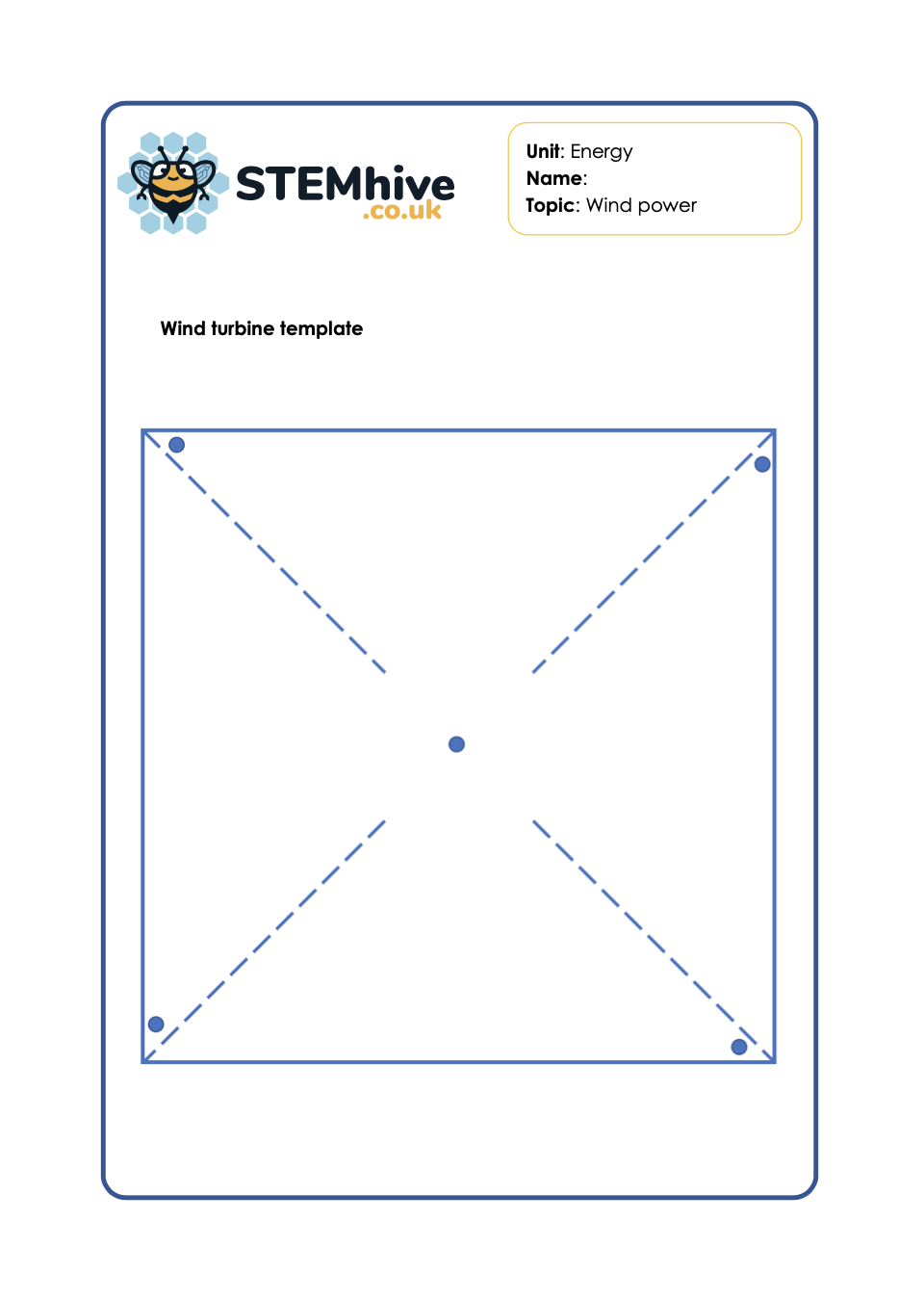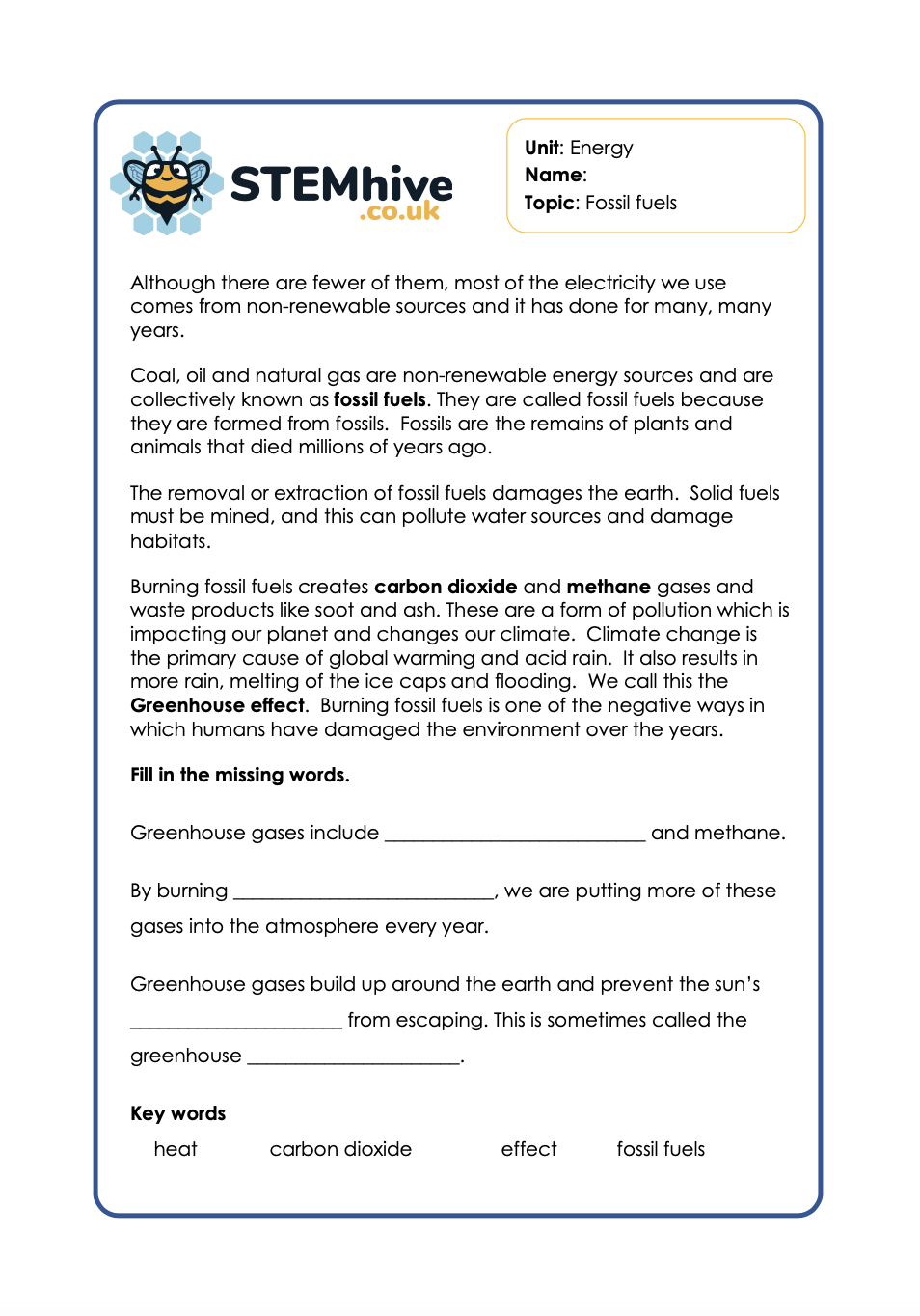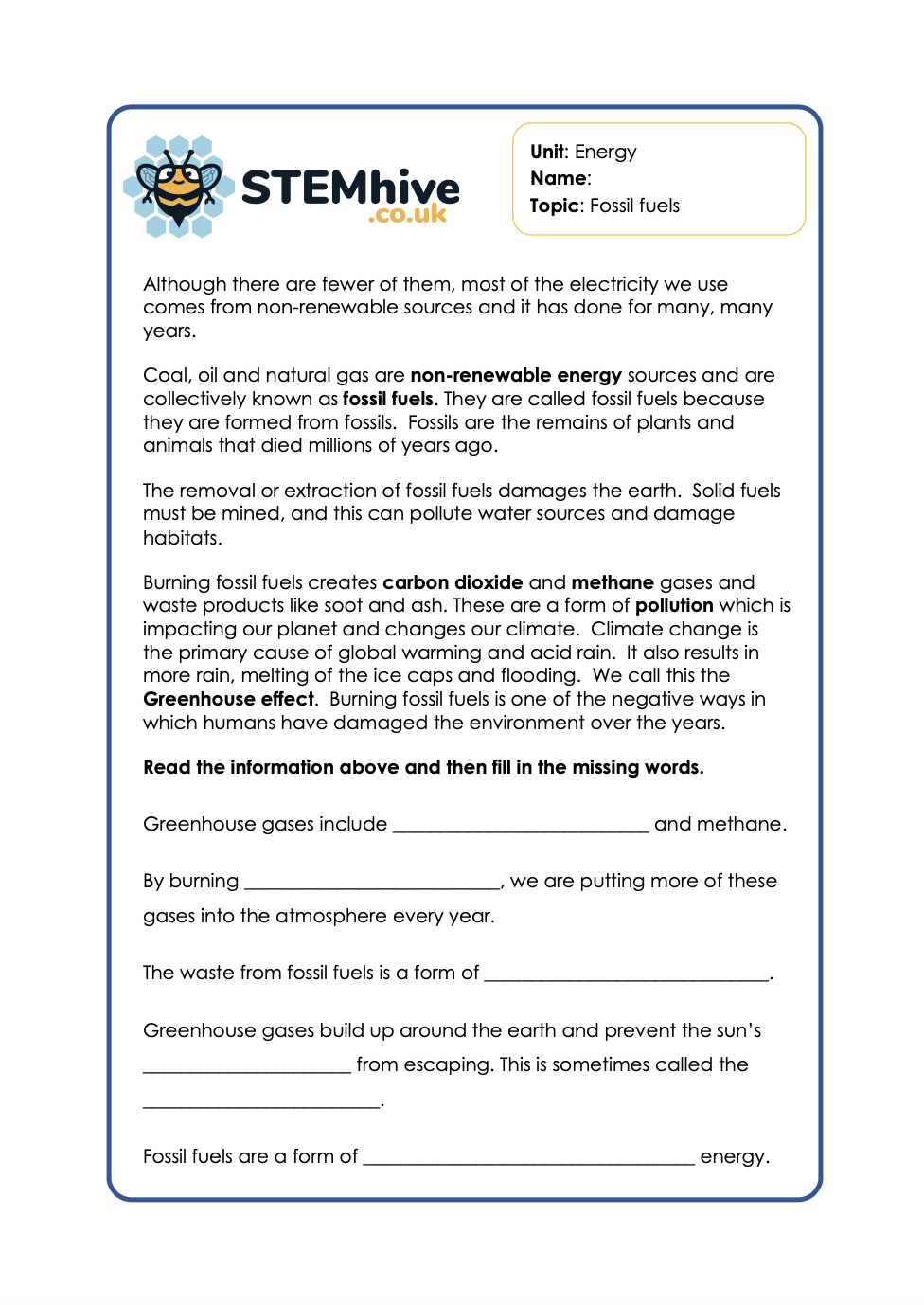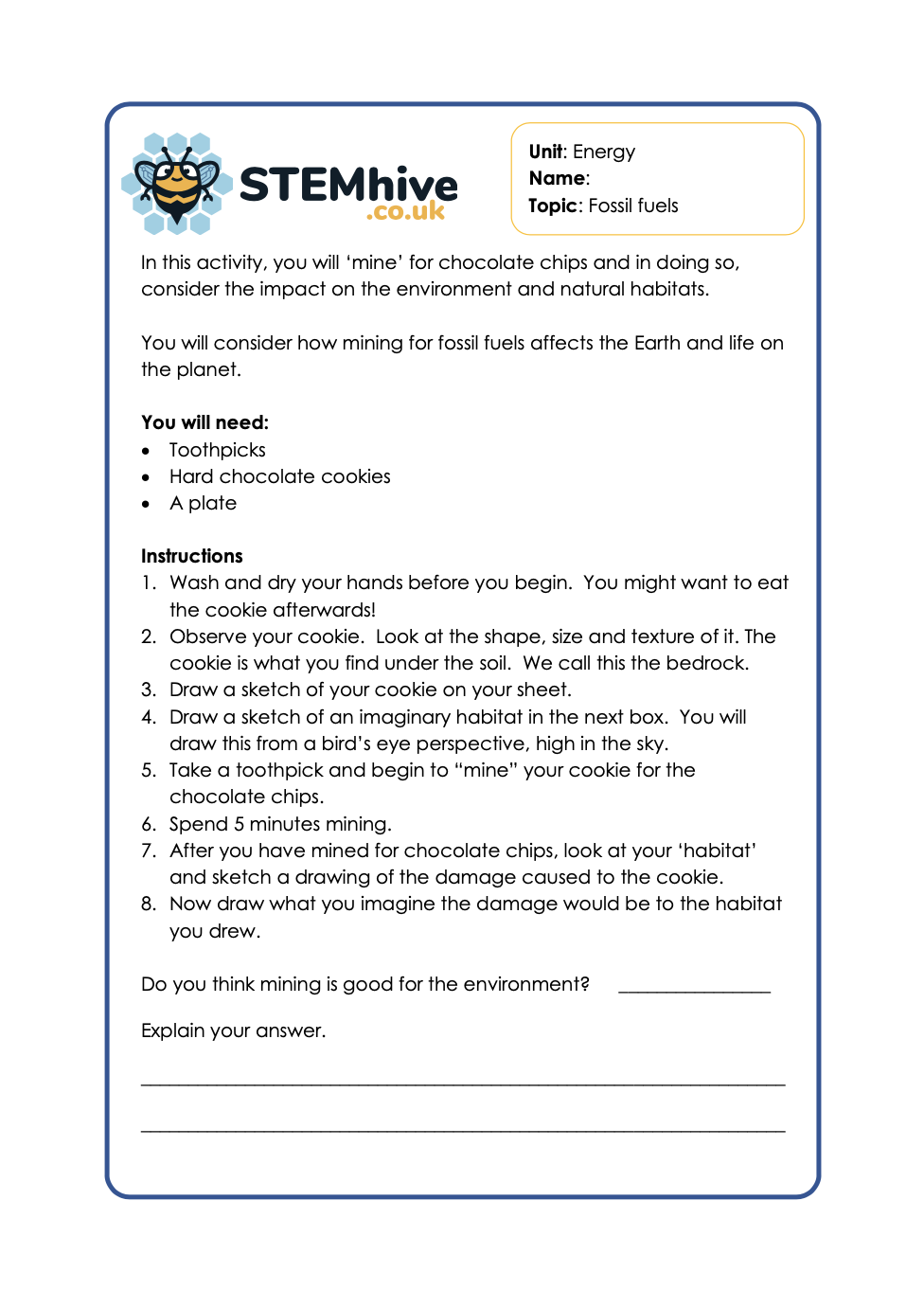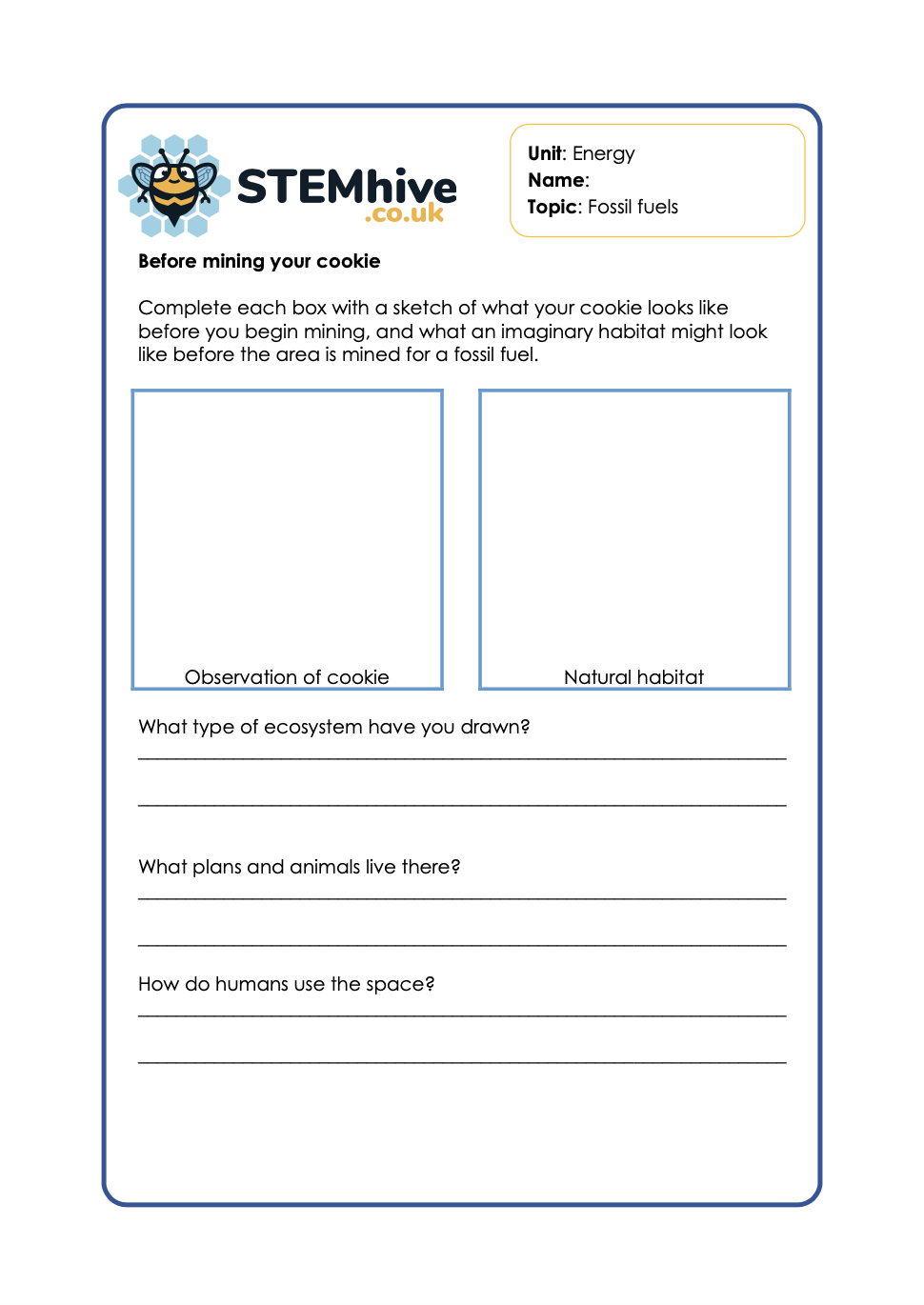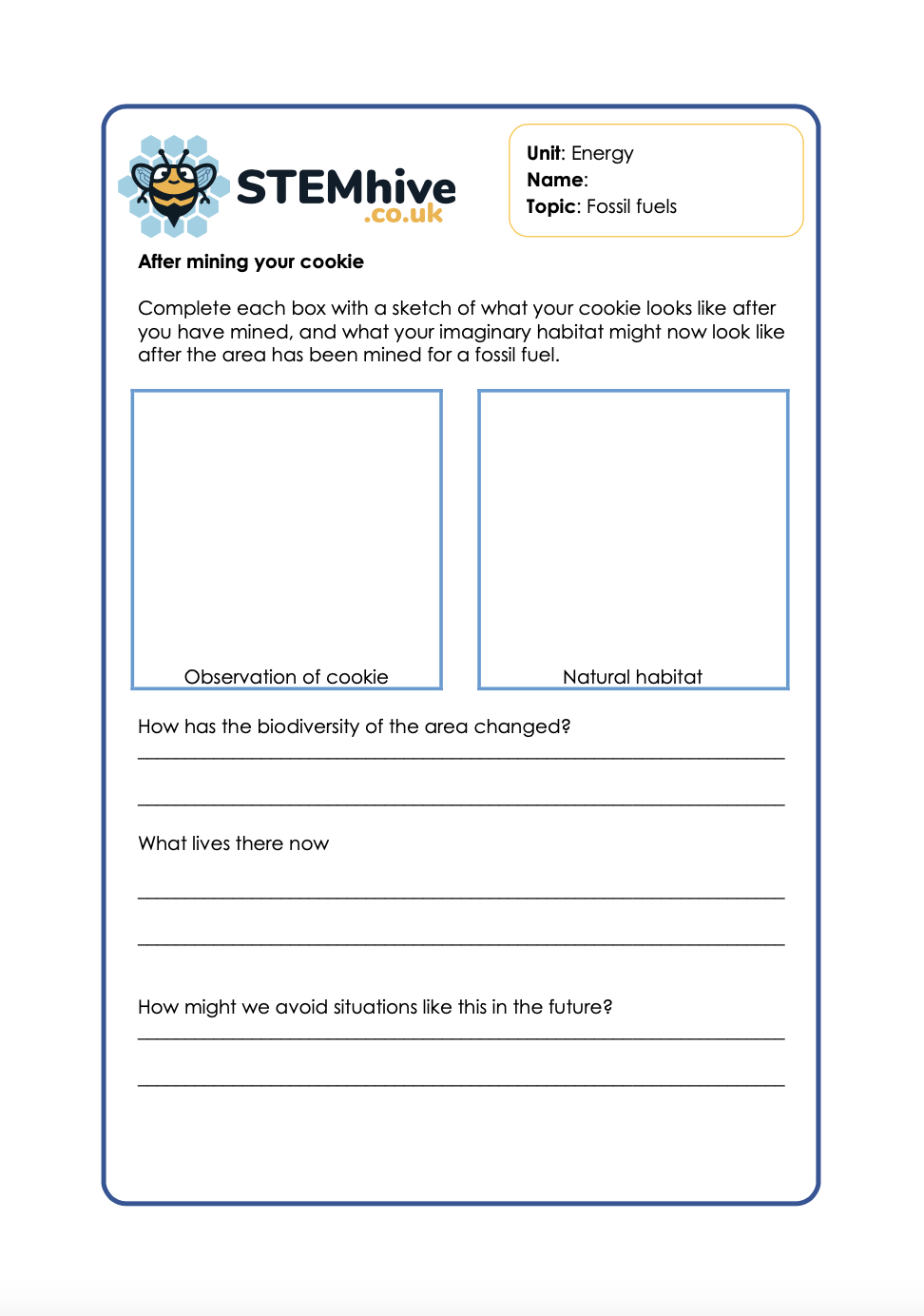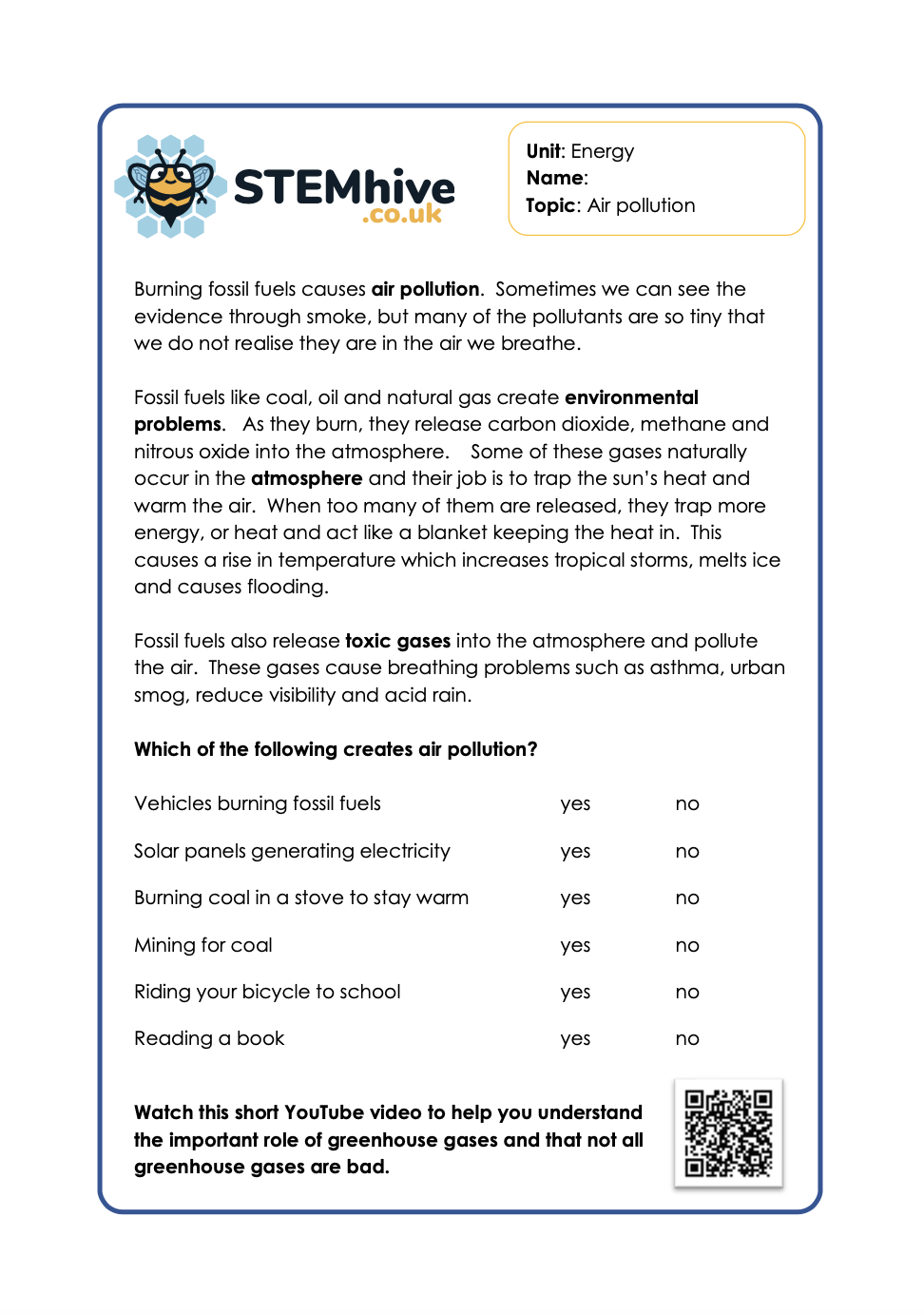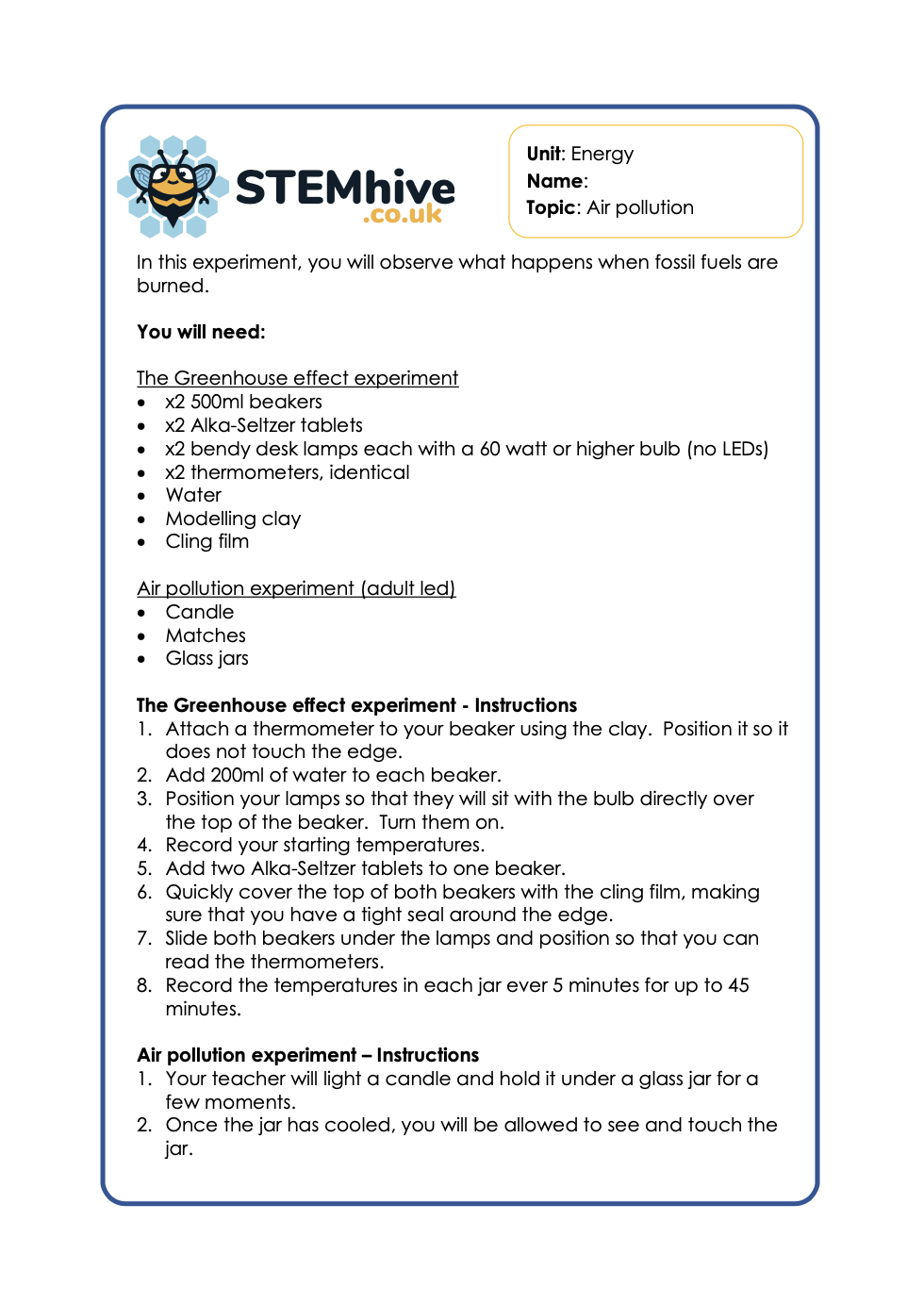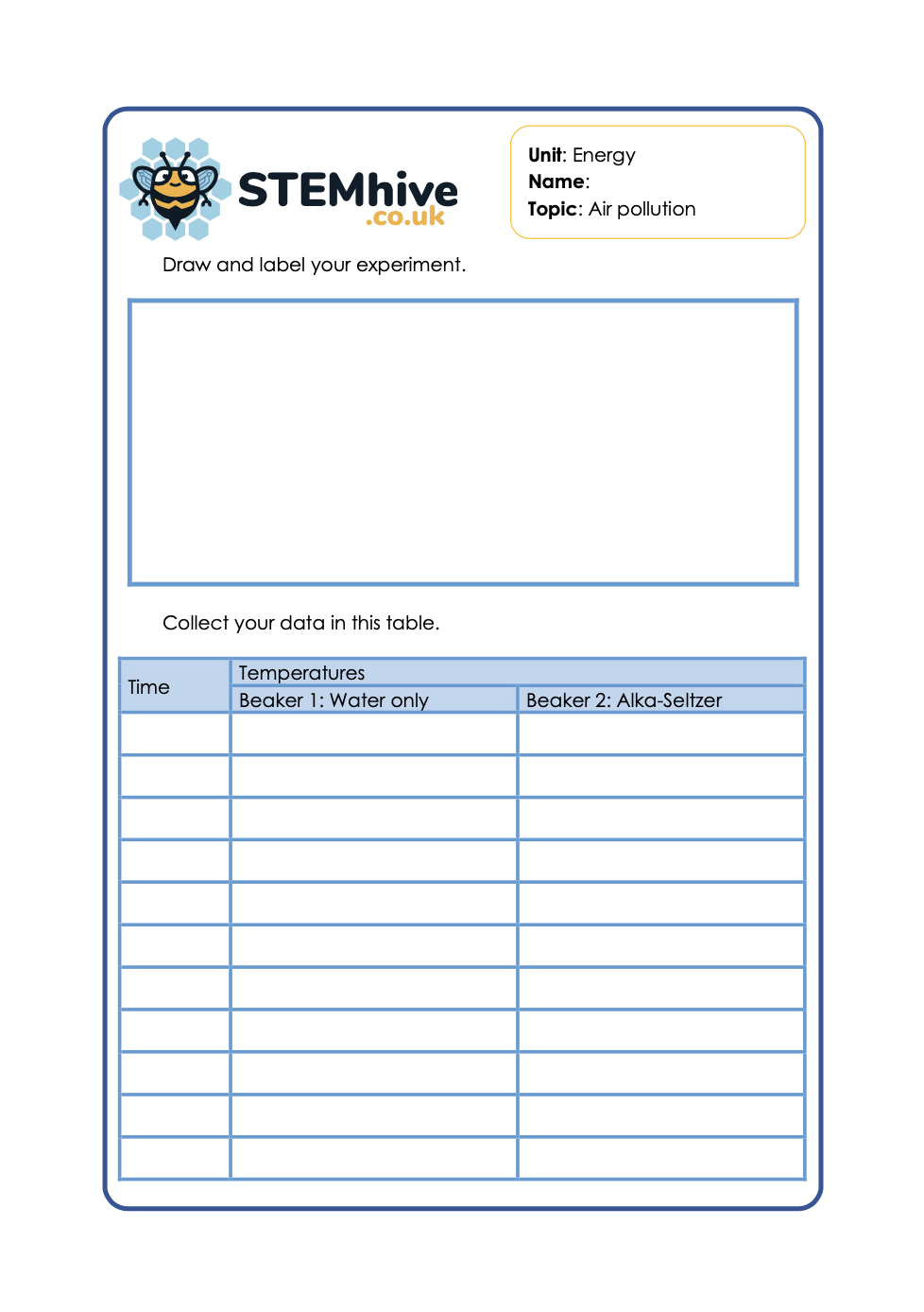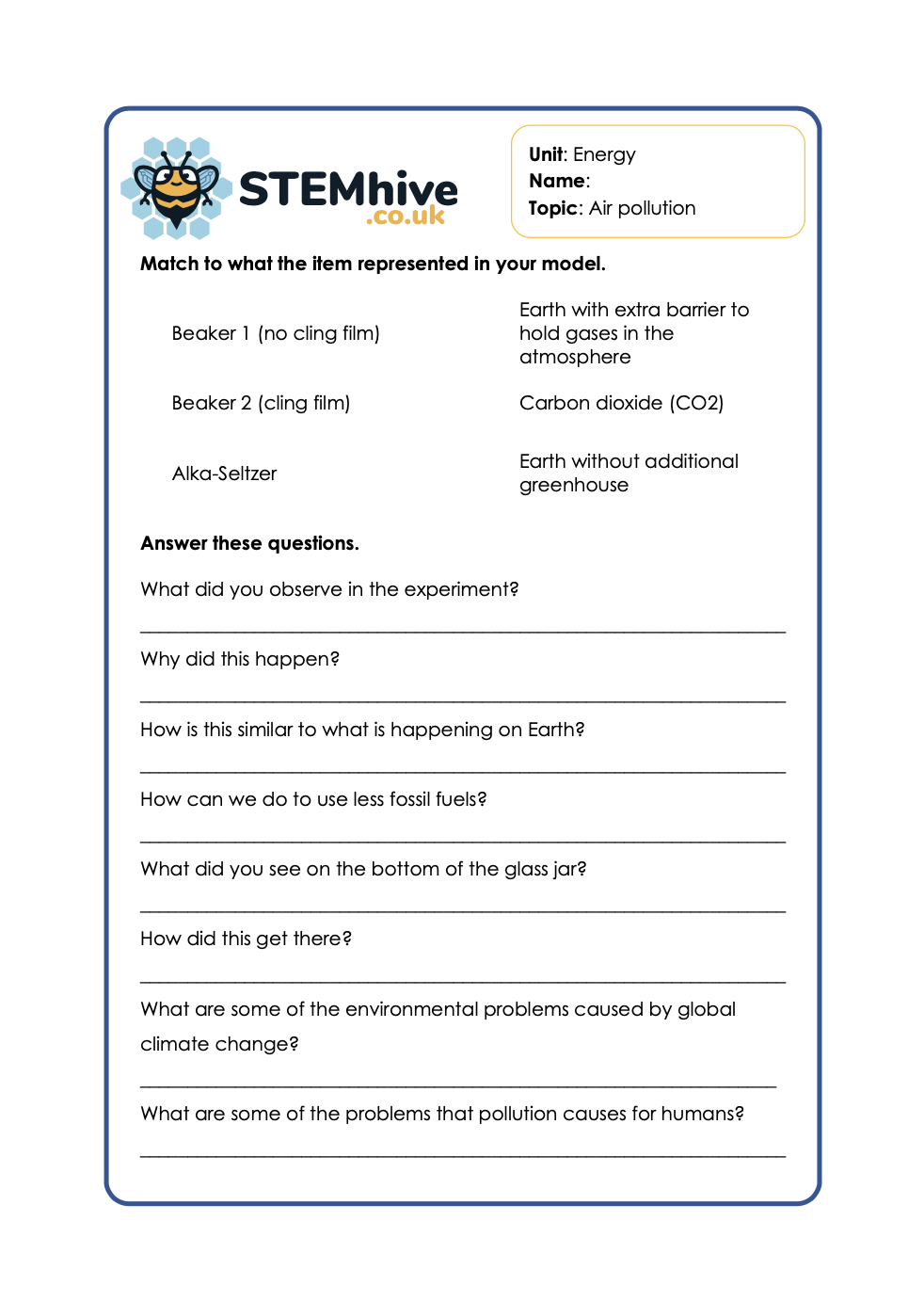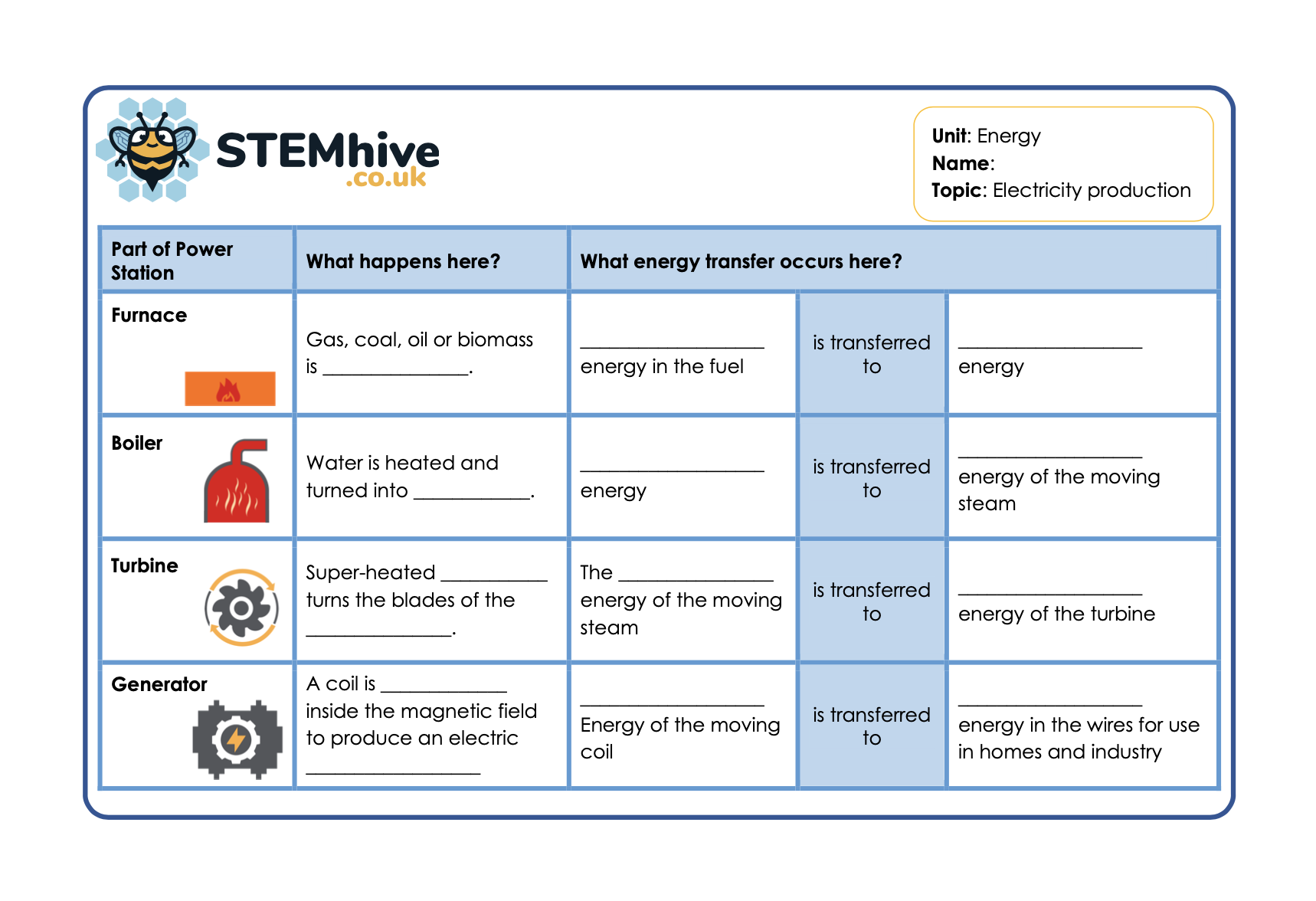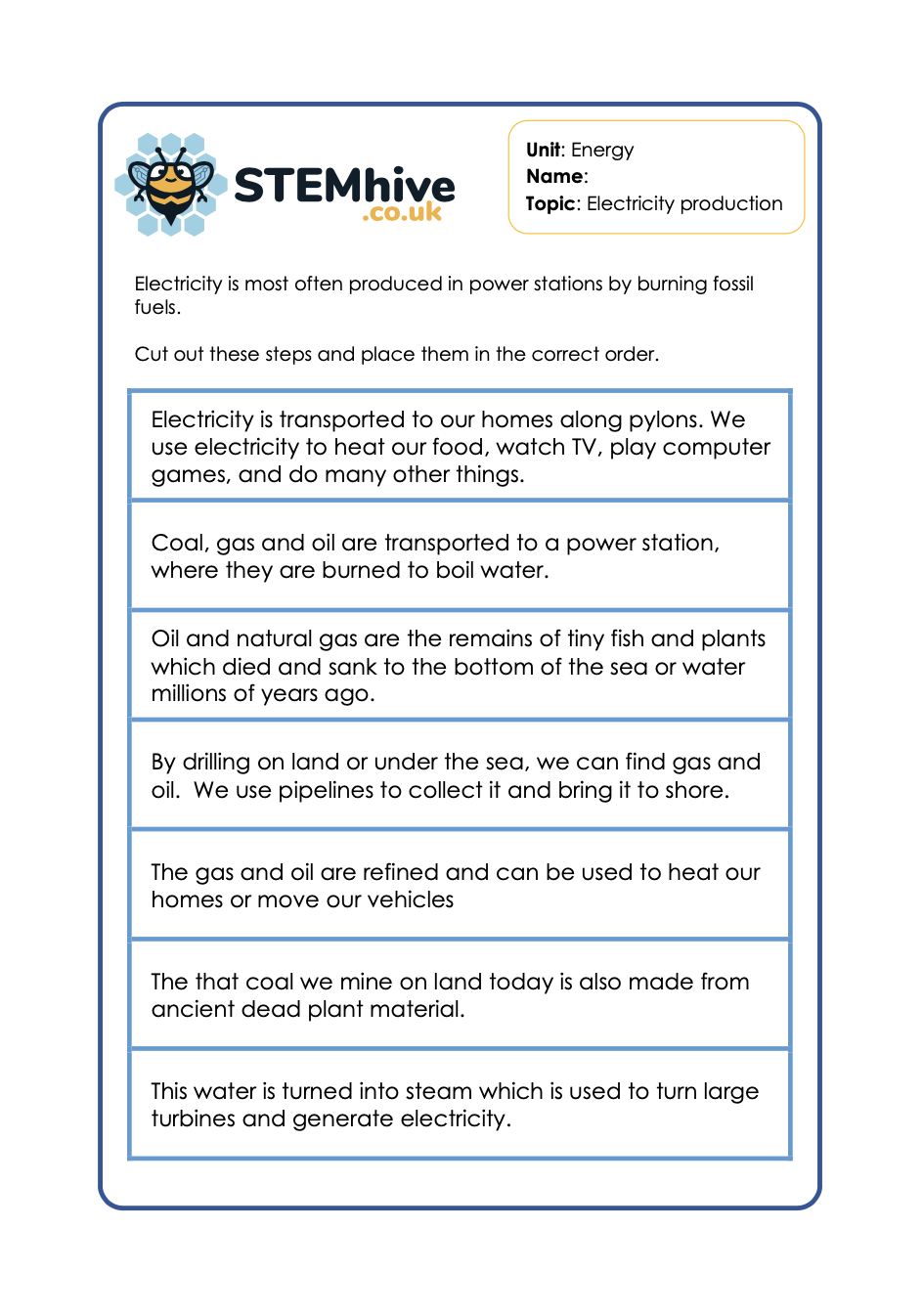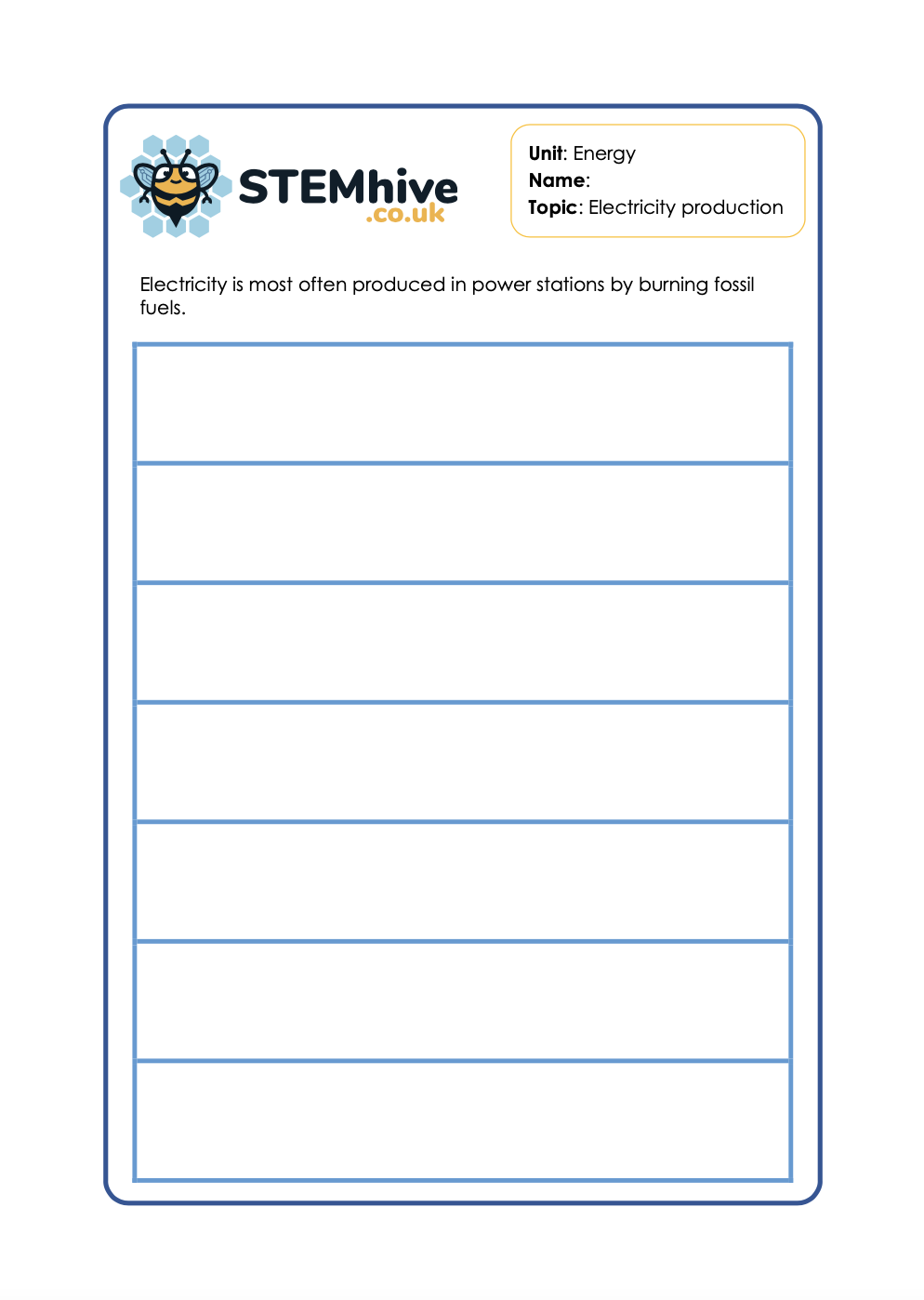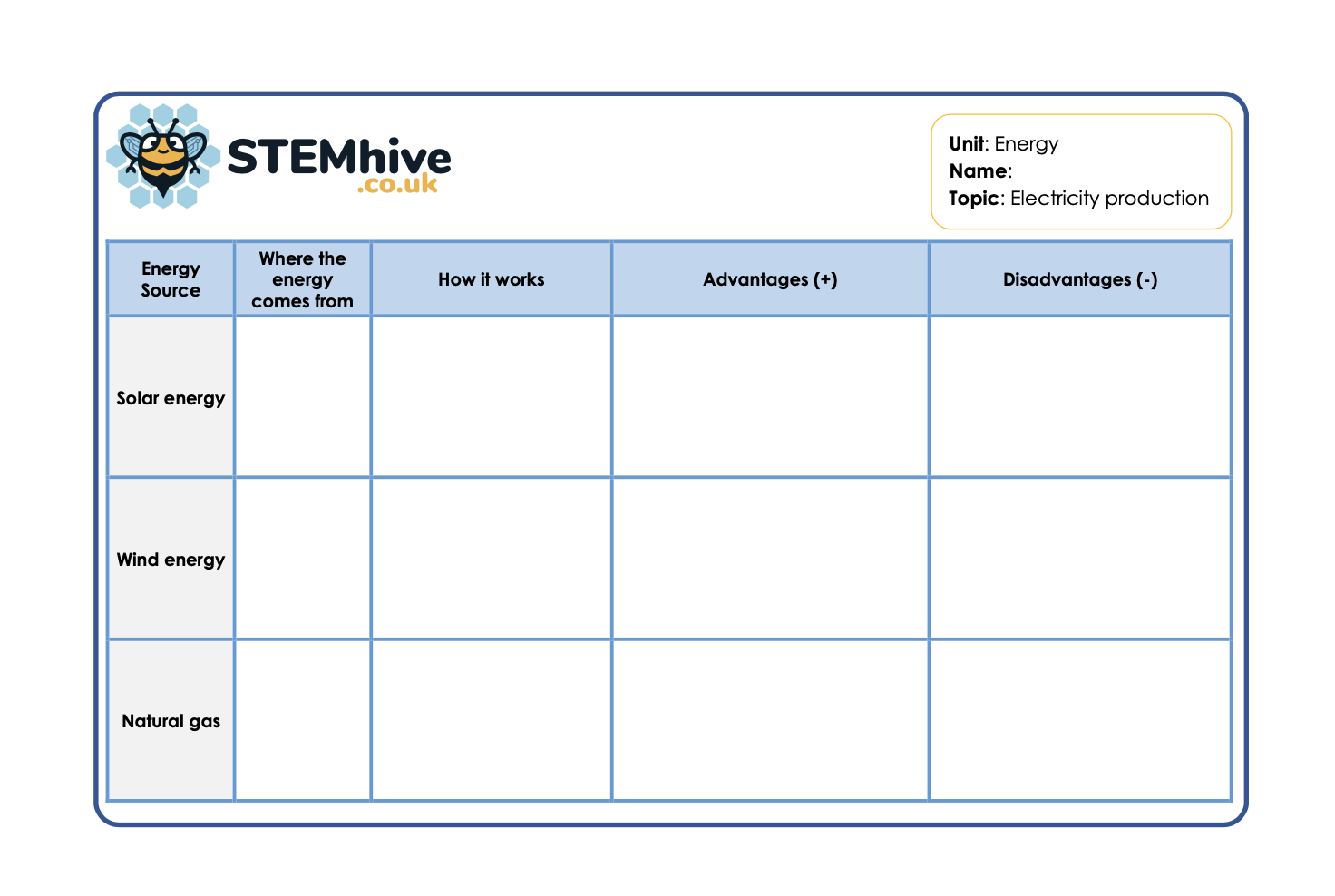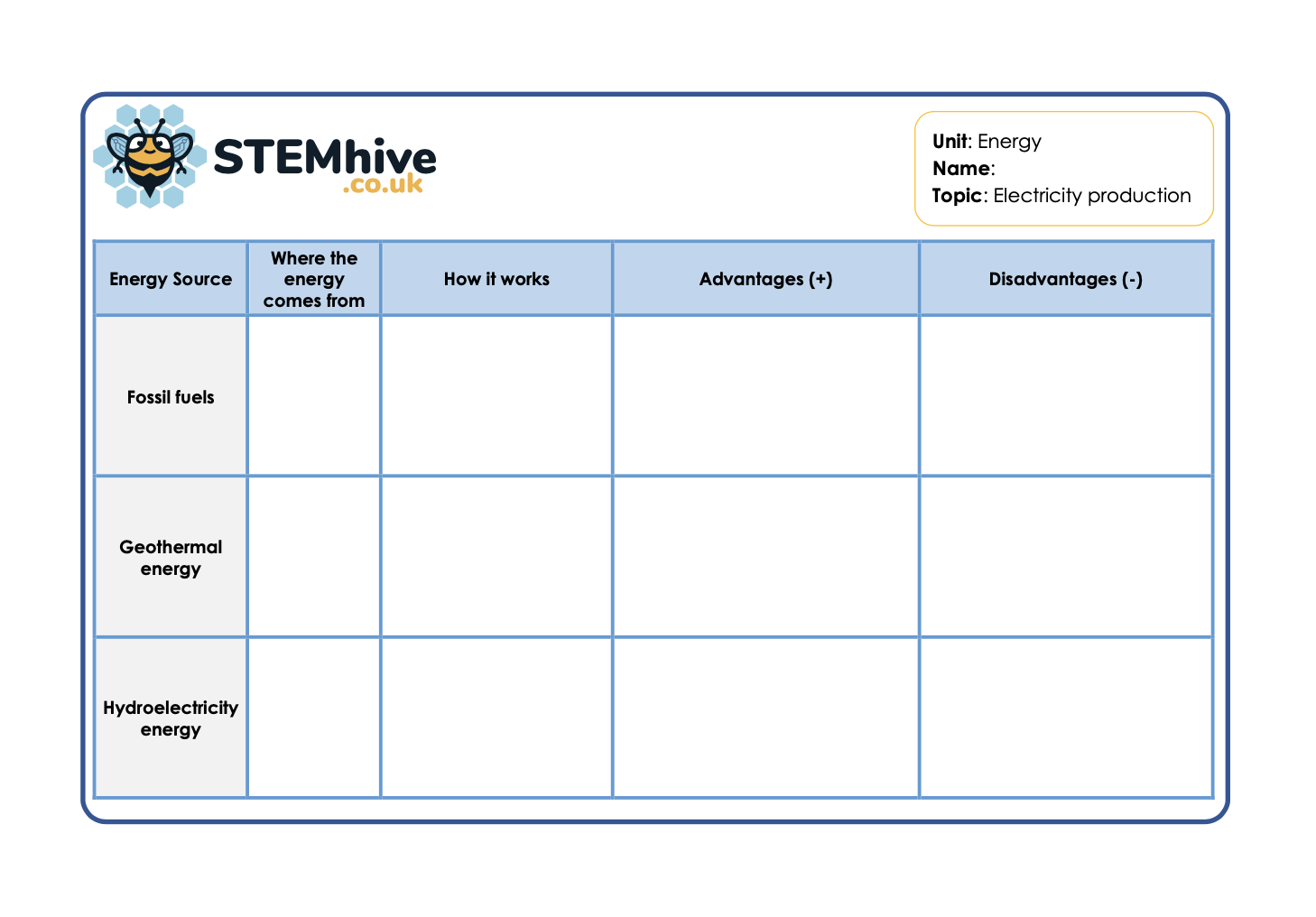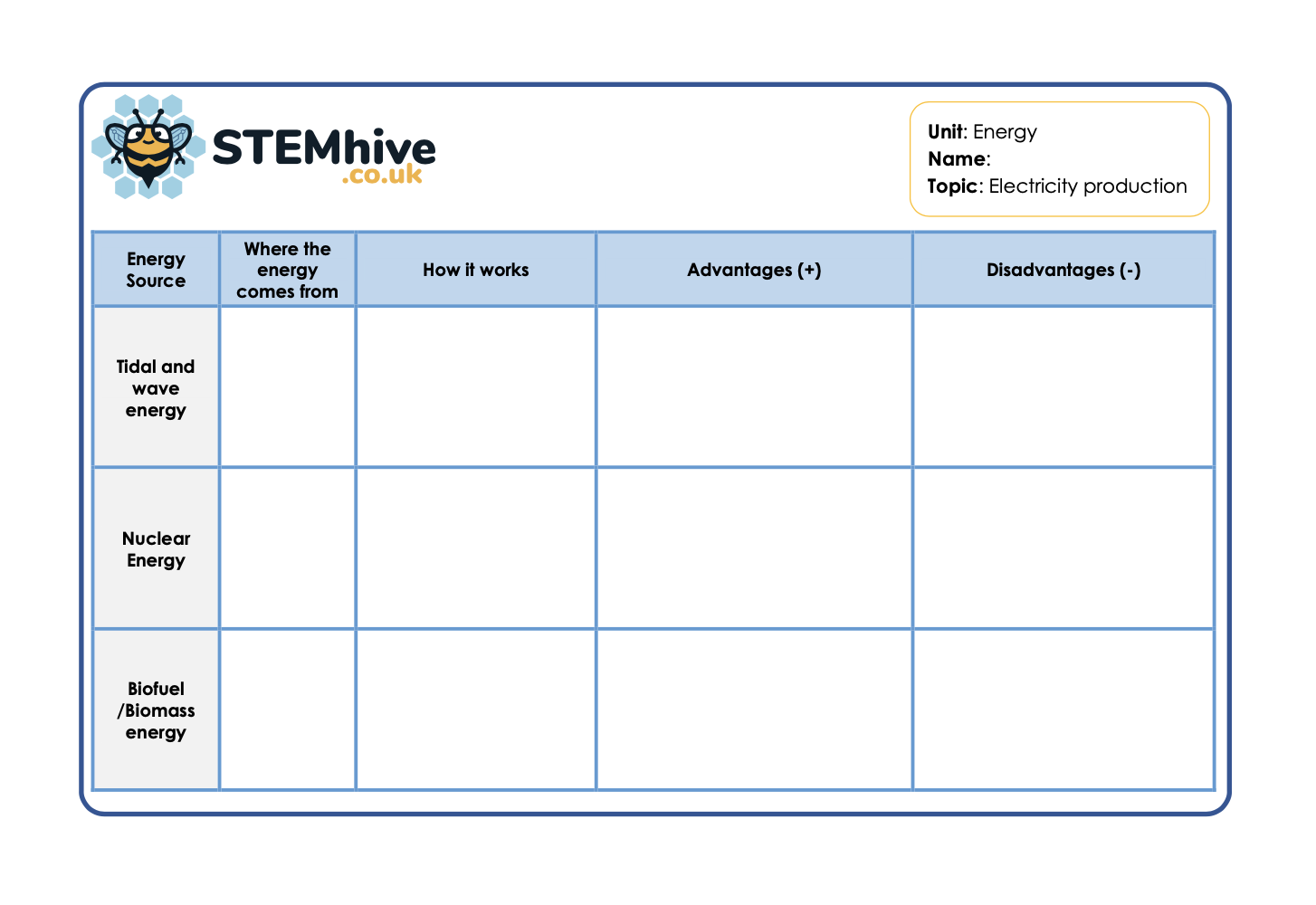Energy
Main Focus: Introduction to Energy
Energy is the ability to do work. People use energy to walk and run, to
move cars along roads and planes through the air. We use energy to
heat food when we cook, to freeze water into ice and to light up our
homes and schools. We also use energy to manufacture products,
and to send astronauts into space.
But how do we get energy?
This activity introduces your class to: Geothermal energy, Wind energy, Fossil fuels, Hydropower energy and Solar energy, giving them a basic understanding and explanation for each.
Unlock ResourceMain Focus: Solar Energy
Did you know that all of our energy comes from the sun?
When the sun shines on us, it produces heat which keeps us warm. This
is because when light energy touches an object, it turns to heat!
The sun shines on plants and trees and the leaves use the sun’s energy
to grow.
Your KS2 class will learn about different uses of solar energy in this resource and will complete an experiment. Light changes to heat once it touches an object, but did you know that the colour of the object impacts the amount of heat it can
produce? In this experiment your class will investigate which colour of
object generates the most heat. Make sure that you conduct this
experiment on a bright sunny day!
Main Focus: Thermal Energy
This activity focuses on thermal energy. In this activity, you will investigate the insulating properties of three different materials. You will then use these findings to decide which material to recommend for hot water storage insulation.
It is important to preserve energy through preventing heat loss. Often
we try do this through minimizing heat loss in our homes. This is why we
insulate the walls in our homes.
Geothermal energy is heat that comes from deep inside the Earth. It is
an energy source that can be used for cooking, bathing, and heating
and it can also be converted into electricity. Geothermal energy is available anywhere on Earth’s surface but can be costly if you have to drill deep into the earth to access it. It is very accessible in countries like Iceland where the hot rocks are close to the surface.
The heat from inside Earth is produced when certain chemical elements decay, or break down.
Main Focus: Renewable and Non Renewable Energy
Renewable energy resources can be used over and over again without running out and many are environmentally friendly. Some renewable resource is such as trees can be replaced by planting new trees when older trees are cut down. Other renewable resource are always there. For example, the sun always shines, and the wind always blows. Tides ebb and flow and water continues to flow in rivers.
But not all energy is renewable. Non-renewable resources take many thousands of years to form and when used they cannot be replaced. Coal, gas and oil are all forms of non-renewable resources. They are sometimes called fossil fuels and when they are all used up there will be no more. Fossil fuels include gas, oil, coal, lignite and peat. Another form of non-renewable energy is nuclear energythis comes from uranium. Uranium is a finite resource and when it is all used there will be no more.
Unlock ResourceMain Focus: Hydropower
In this activity you will create a milk jug hydro powered experiment.
You will need:
– 2 litre plastic milk bottle
– 1 permanent marker
– Colored pencils
– Ruler
– 1 small nail, about 1 inch long
– Duct tape
– Tape measure
– Stepping stool, or bricks or blocks of wood
– Stopwatch
Hydropower
We can generate electricity from water in different ways.
Sea waves have kinetic energy. This means that there is energy in the
movement. Many different ways are being developed to harness this
energy to generate electricity. Some systems use machines that bob
up and down with the waves while others use the waves to compress
air which turns the turbine and generates electricity.
Tidal dams called barrages trap water at high tide. After the tide goes
out, the barrages are opened, allowing water to rush through pipes and causing turbines to spin. These turbines turn generators which make electricity. The process begins again when the tide comes in again.
Main Focus: Wind Turbines
Wind power has become a popular source of energy in many places. It is a clean or renewable energy source. This means that it does not create pollution and will never run out. You will find wind turbines in windy and exposed places.
In this STEM activity, your class will learn about turbines and farms and the science behind how they work. They will also follow the instruction to create their own turbines.
Main Focus: Fossil Fuels
Although there are fewer of them, most of the electricity we use comes from non-renewable sources and it has done for many, many years.
Coal, oil and natural gas are non renewable energy sources and are collectively known as fossil fuels. They are called fossil fuels because they are formed from fossils. Fossils are the remains of plants and animals that died millions of years ago.
In this activity, your class will ‘mine’ for chocolate chips and in doing so, consider the impact on the environment and natural habitats.
Main Focus: Air Pollution
This resource introduces your class to air pollution and how that has an effect on our environment and weather.
Your class will also try to identify situations that create air pollution from the given list.
In this experiment, your class will observe what happens when fossil fuels are burned. This is an adult led experiment.
Main Focus: Electricity Production
This is another STEM activity that encourages your class to complete the table to highlight the processes that create electricity.
Unlock ResourceMain Focus: Electricity Production
In this activity, your class will sequence the events to produce electricity in power stations.
Suggested sequence.
- Oil and natural gas are the remains of tiny fish and plants which died and sank to the bottom of the sea or water millions of years ago.
- The that coal we mine on land today is also made from ancient dead plant material.
- By drilling on land or under the sea, we can find gas and oil. We use pipelines to collect it and bring it to shore.
- Coal, gas and oil are transported to a power station, where they are burned to boil water.
- This water is turned into steam which is used to turn large turbines and generate electricity.
- Electricity is transported to our homes along pylons. We use electricity to heat our food, watch TV, play computer games, and do many other things.
- The gas and oil are refined and can be used to heat our homes or move our vehicles.
Main Focus: Summarising Findings
This is a great summative assessment for finishing this topic on energy.
Your class will reflect on all the forms of energy, how they work, advantages, disadvantages and where it comes from.
Unlock Resource
